Small dining rooms present a unique challenge: balancing adequate illumination with spatial constraints. From delicate mini chandeliers that add a touch of elegance without overwhelming the ceiling, to recessed LED strips that silhouette the room’s perimeter, these 20 lighting ideas demonstrate how thoughtful fixture selection can transform a compact dining area into a bright, inviting haven. Whether you prefer the sculptural drama of a Sputnik chandelier, the organic warmth of a rattan pendant, or the soft glow of paper lanterns, each concept maximizes light output and style. By layering ambient, task, and accent lighting—often with dimmer controls—you can tailor the mood, enhance functionality, and visually expand your small dining space.
1. Mini Chandeliers
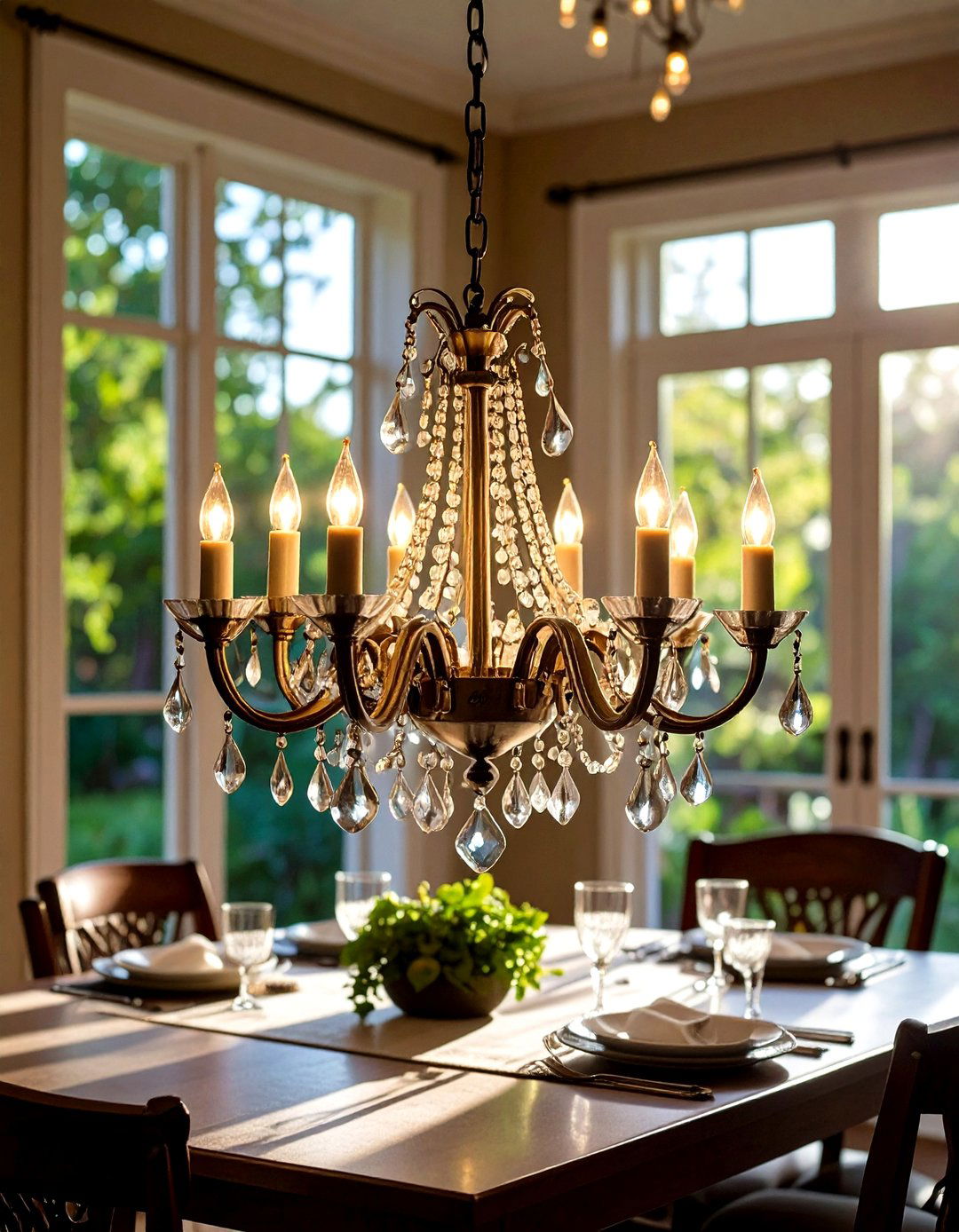
Mini chandeliers offer the grandeur of a classic chandelier in a compact form that won’t dominate a small dining room. These scaled-down fixtures often feature delicate crystal droplets or slender metal arms, casting intricate shadows and refracting light to create a sense of depth. Ideal for tables seating four or fewer, mini chandeliers draw the eye upward—visually increasing ceiling height—and serve as a focal point without overcrowding the space. Their modest footprint allows installation over narrow tables or banquette seating areas, ensuring even illumination across the tabletop while preserving sightlines to other design elements.
2. Flush Mount Ceiling Lights
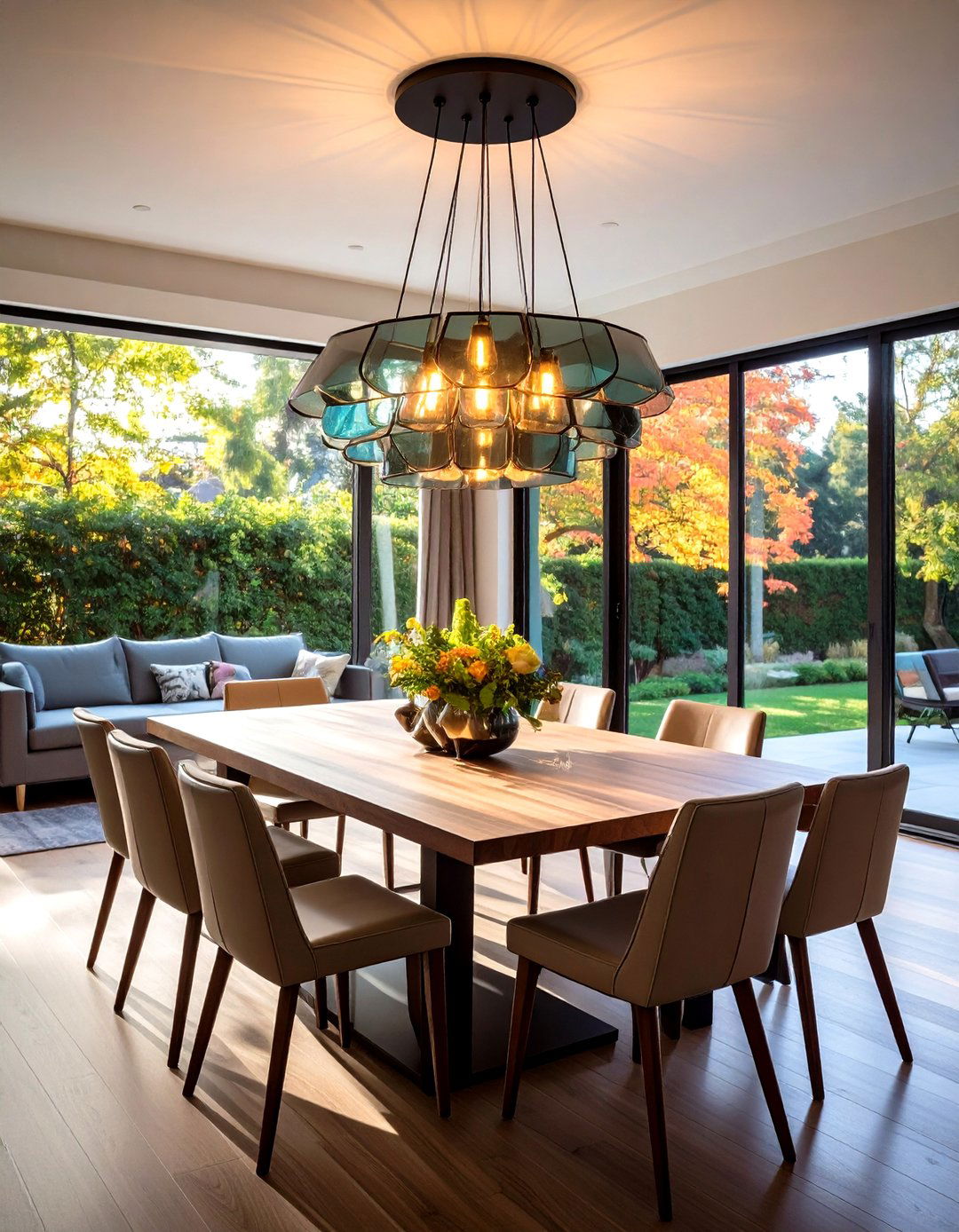
Flush mount fixtures sit close to the ceiling, making them perfect for rooms with low ceilings or compact footprints. Modern designs range from sleek metal discs to layered glass petals, delivering ambient light without encroaching on headspace. Flush mounts spread illumination evenly, eliminating dark corners and brightening the entire room. For extra interest, look for models with dimmable LED modules—this lets you transition from bright, functional light during meals to softer, moodier glow for evening gatherings. Their unobtrusive profile ensures a clean, streamlined ceiling plane, helping a small dining room feel open and uncluttered.
3. Adjustable Pendant Lights
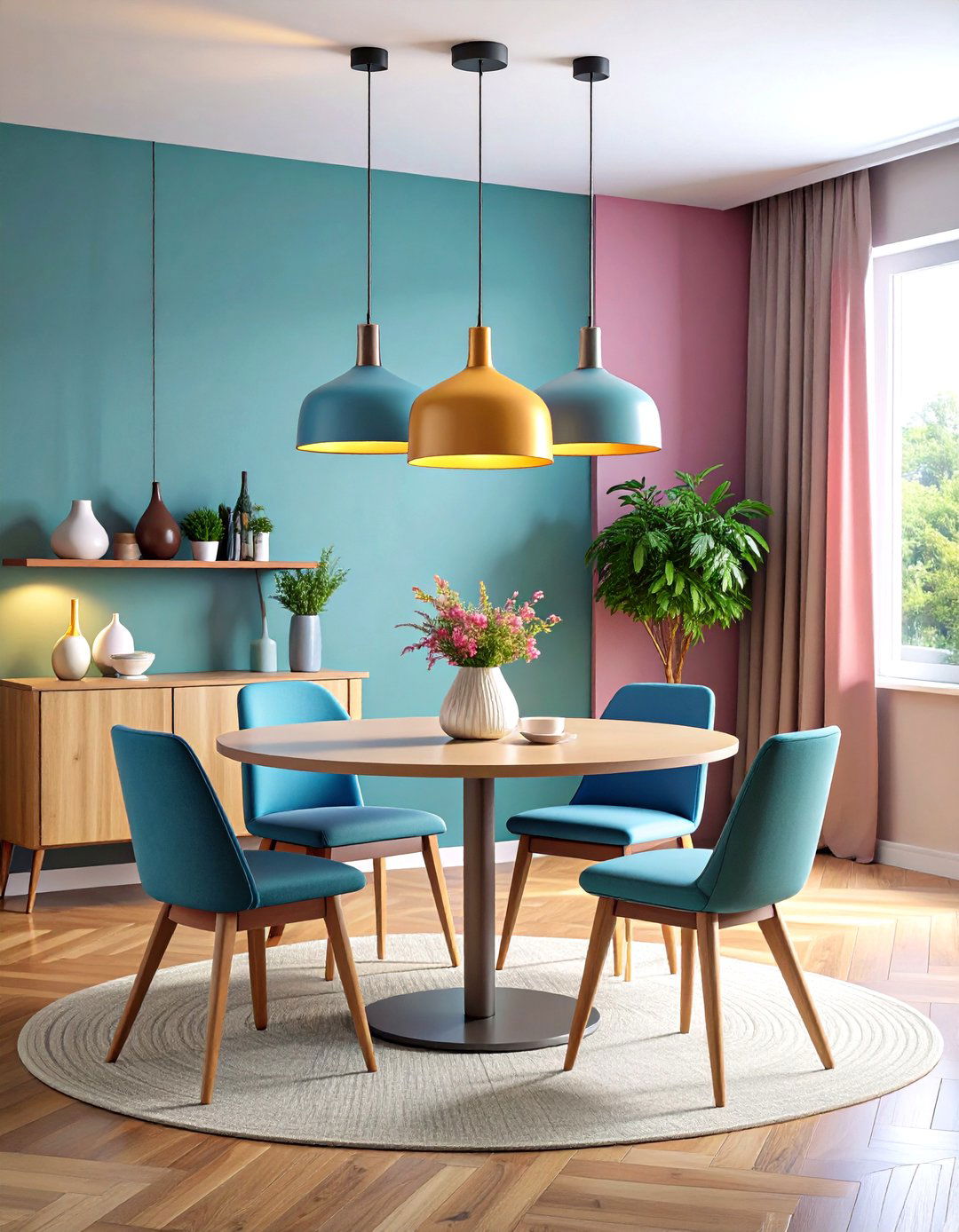
Adjustable-height pendant lights offer versatility, allowing you to customize the fixture’s drop to suit table height and room scale. Single pendants over round or square tables create a cozy, symmetrical vignette, while adjustable cords ensure the light is focused where it’s needed most—on plates and tabletop décor. Choose pendants with adjustable heads or swivel joints for added task lighting flexibility. In a small dining room, pendants help define the eating area without bulky structures, and their focused beam minimizes light spillage into adjacent spaces. When installed on dimmers, they adapt effortlessly from bright meal prep to intimate dinner ambiance.
4. Wall Sconces
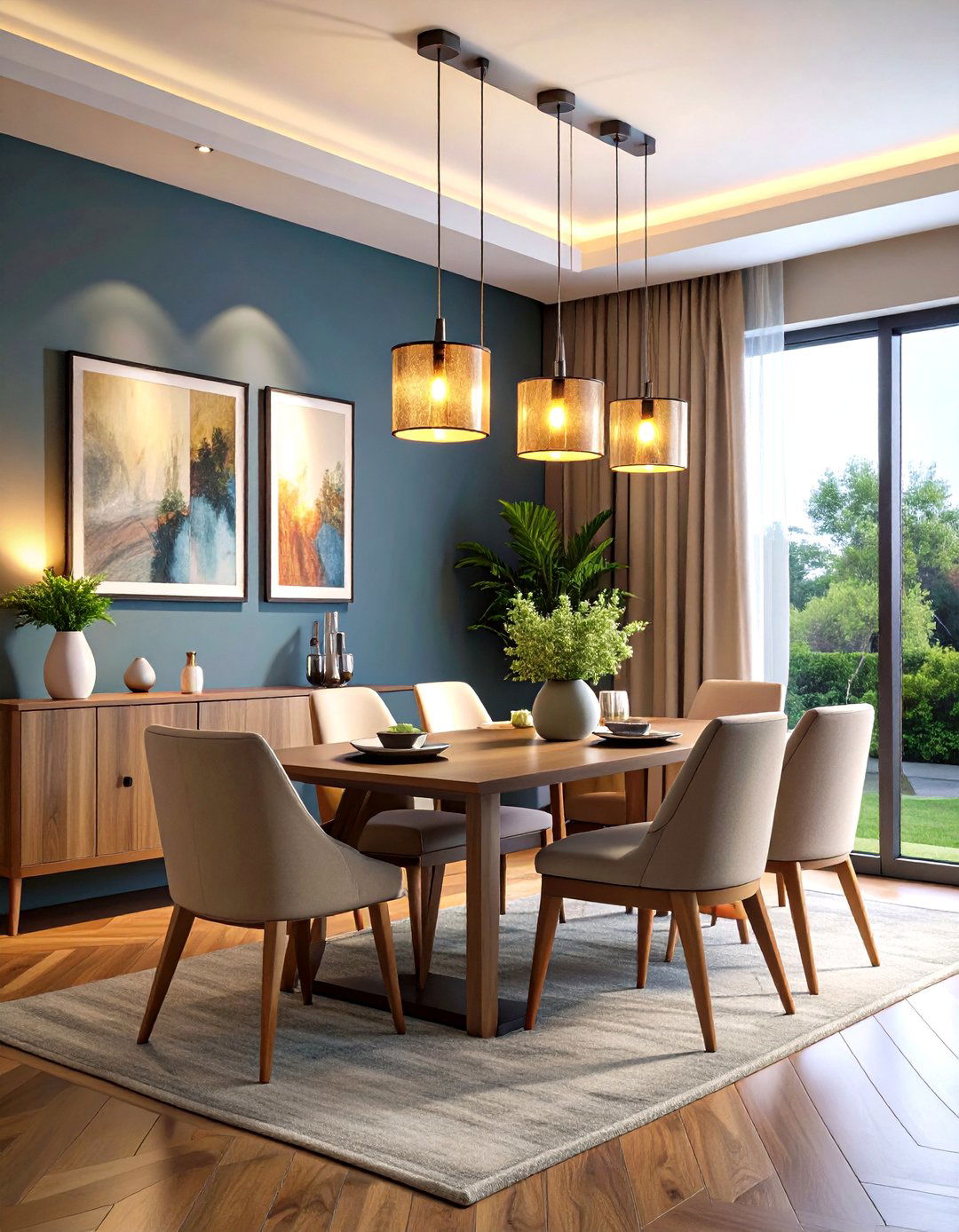
Wall sconces free up ceiling space and add layered lighting along the room’s perimeter. Mounted at eye level, sconces provide flattering, indirect illumination—perfect for accentuating artwork or architectural features. In narrow dining rooms or those with low ceilings, sconces prevent overcrowding overhead fixtures, dispersing light across walls to visually widen the room. Pair sconces on either side of a mirrored or art-adorned wall to create symmetry and bounce light around. When wired to a separate switch or dimmer, they offer gentle background glow to complement overhead lighting or stand alone for quiet, evening gatherings.
5. LED Recessed Lighting
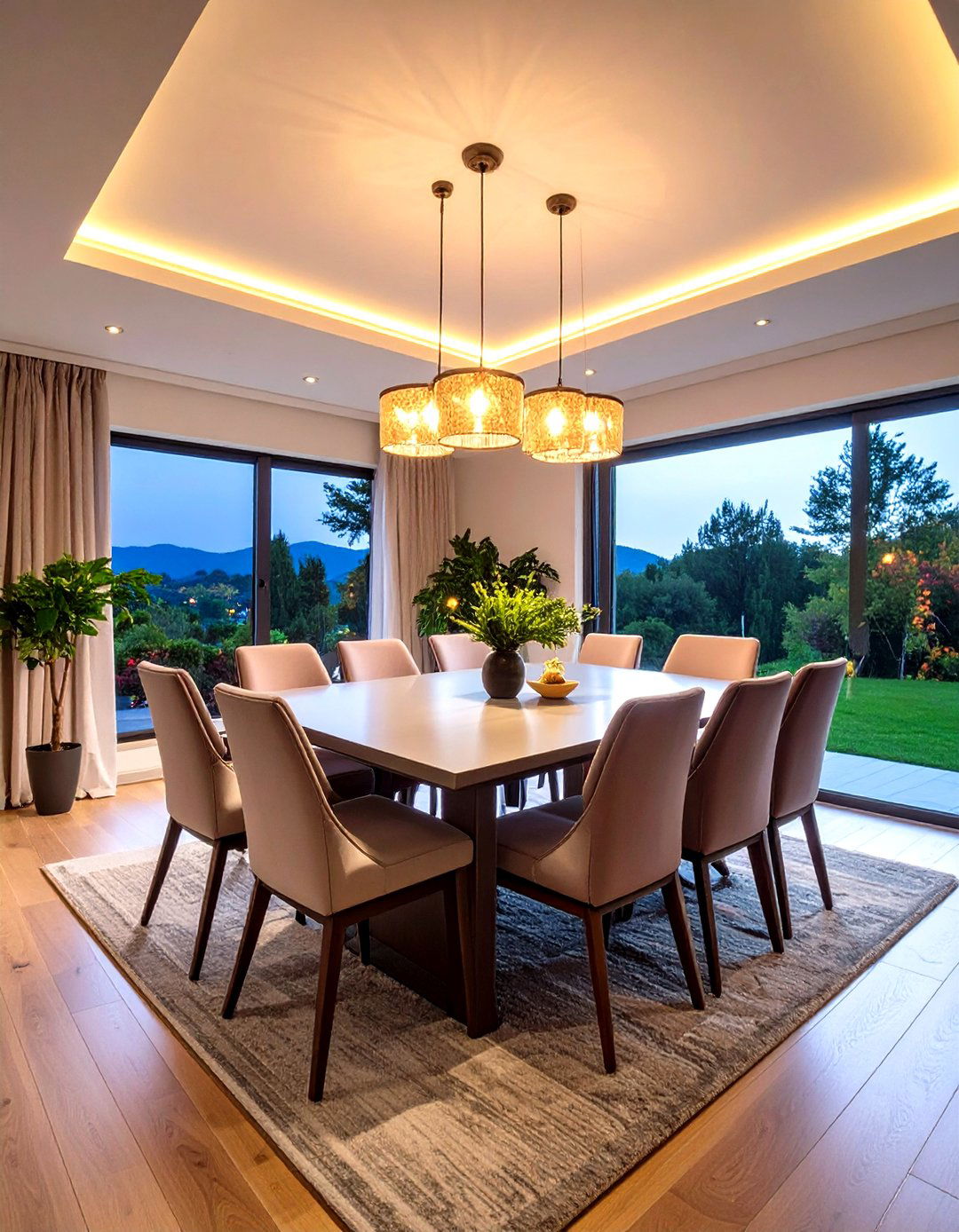
Recessed LED downlights install flush with the ceiling, providing unobtrusive general illumination. In small dining rooms, multiple recessed LEDs ensure uniform light dispersion, eliminating harsh shadows and bright spots. Opt for adjustable gimbals to direct light toward the table or walls, enhancing the room’s focal points. Their slim profile preserves valuable headroom, and integrated dimming options let you fine-tune brightness. LED technology offers energy efficiency and long lifespans, reducing maintenance. By targeting walls or decorative elements, recessed fixtures also serve as accent lights—illuminating textured wallpaper or shelving and creating a layered, spacious feel.
6. Linear Chandeliers

Linear chandeliers work especially well over rectangular tables or banquettes, offering balanced lighting along the table’s length. Sleek metal frames or suspended rod designs keep the fixture’s visual weight low, preserving sightlines across the room. In compact layouts, linear fixtures emphasize horizontal lines—visually widening the space. Many models feature integrated LED strips or multiple bulbs, providing even illumination without gaps. Adjustable cables accommodate ceiling height variations, while minimal ornamentation ensures the focus remains on the dining area and décor. Wired to a dimmer, linear chandeliers transition smoothly from bright task lighting to a soft, ambient glow.
7. Clustered Pendant Lights
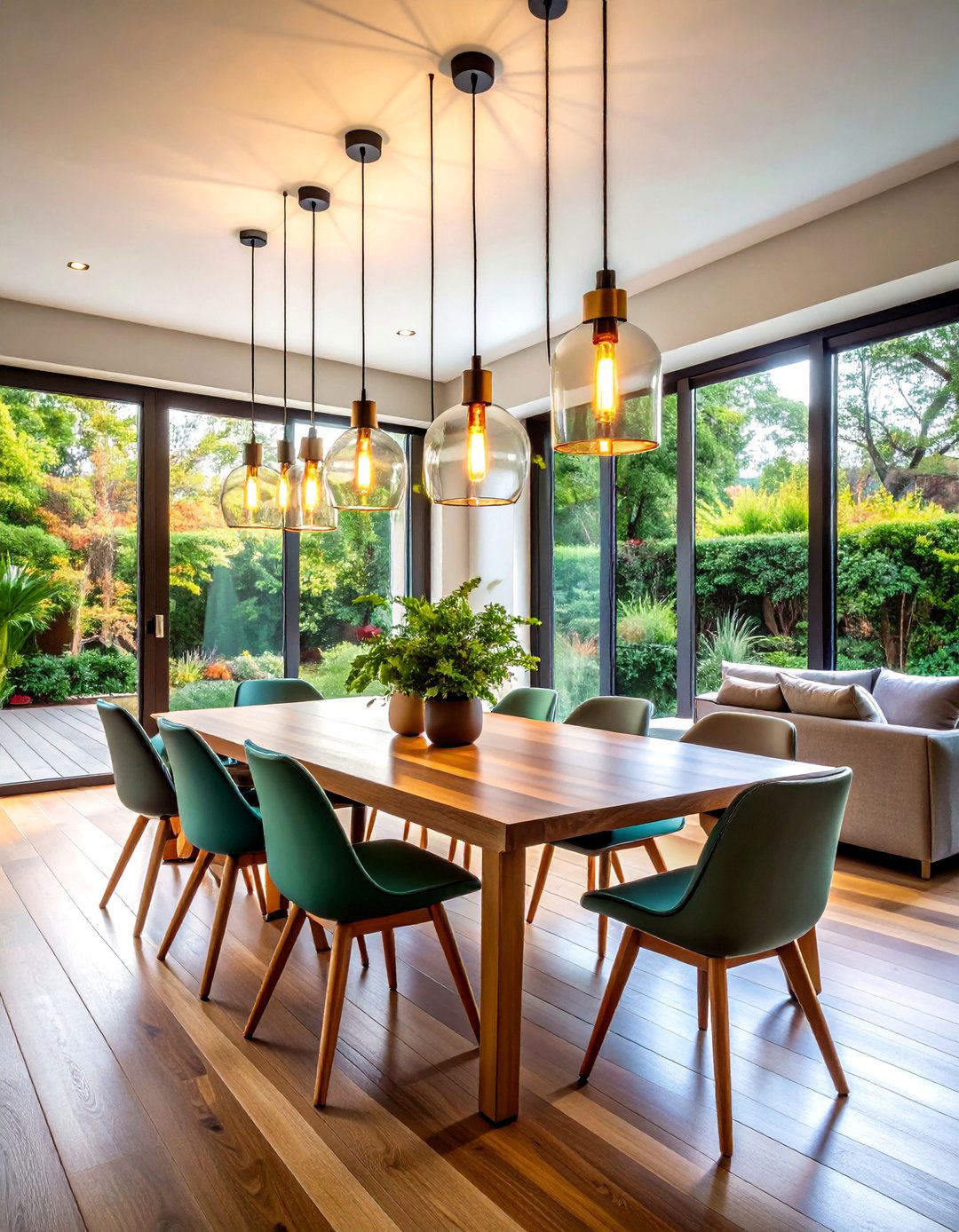
Clustering multiple small pendants at varying heights creates a dynamic, sculptural centerpiece. This grouping technique draws the eye—adding visual interest—while each individual pendant remains petite enough for low ceilings. Choose pendants with clear or translucent shades for maximum light output, or mix opaque finishes for layered brightness and texture. Clusters can be grouped above a long table or offset for a modern asymmetrical look. By staggering drop lengths, you craft a sense of depth and movement. Clustered pendants balance form and function, delivering targeted task illumination and an artful statement without overwhelming a small dining area.
8. Glass Pendants for an Airy Feel
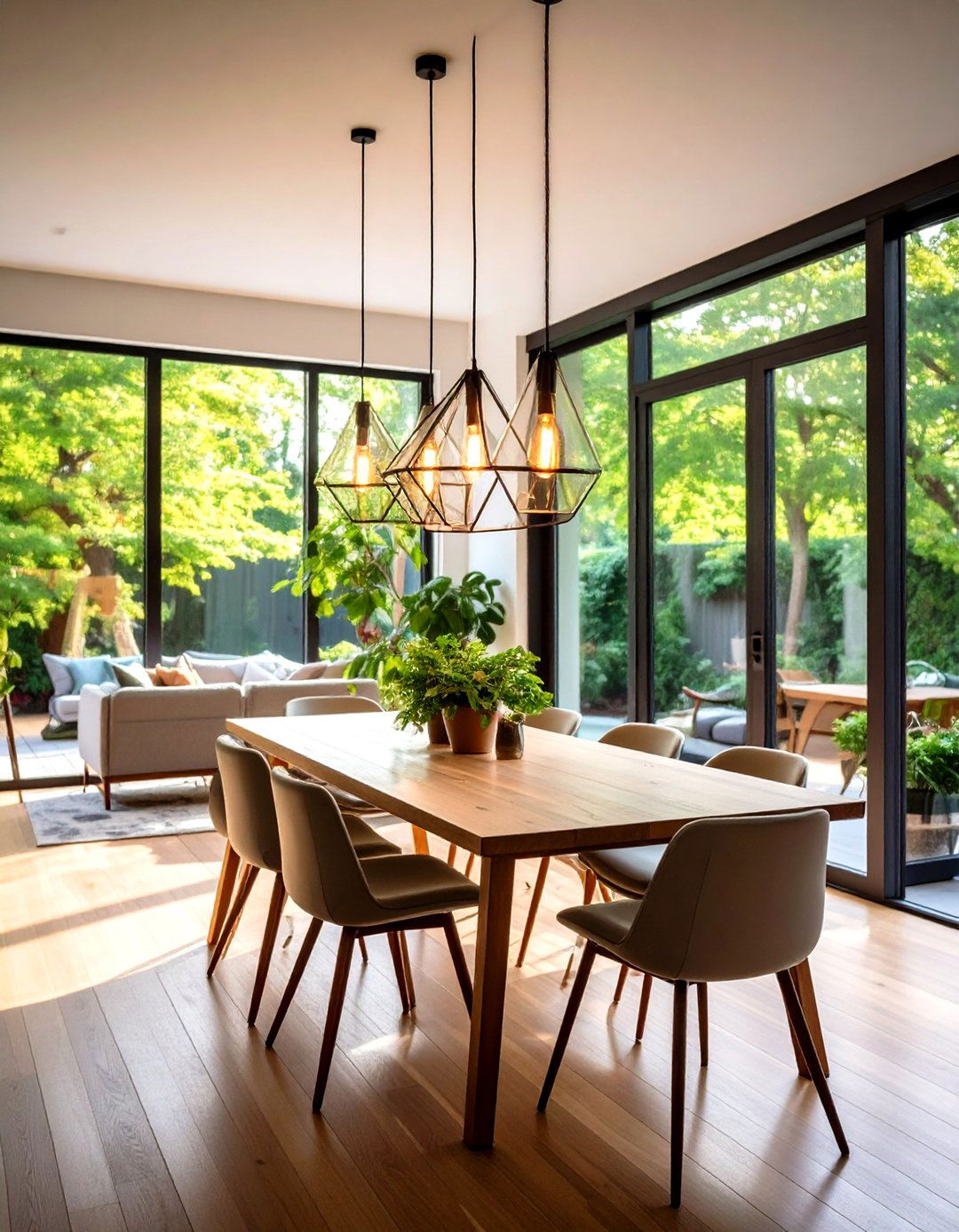
Clear or lightly tinted glass pendants convey a sense of openness, as their transparency prevents visual clutter in a small room. The glass allows light to shine unobstructed, maximizing brightness, while the fixture’s silhouette seems to disappear when switched off. Varieties include blown-glass globes, ribbed cylinders, or geometric prisms—each offering unique light refraction patterns. Glass pendants pair beautifully with minimalist or modern décor, complementing metal finishes like brass or black iron. When used over a table, they cast soft pools of light without harsh glare. Glass pendants’ understated elegance makes them a perennial favorite for tight spaces.
9. Mirror-Enhanced Fixtures
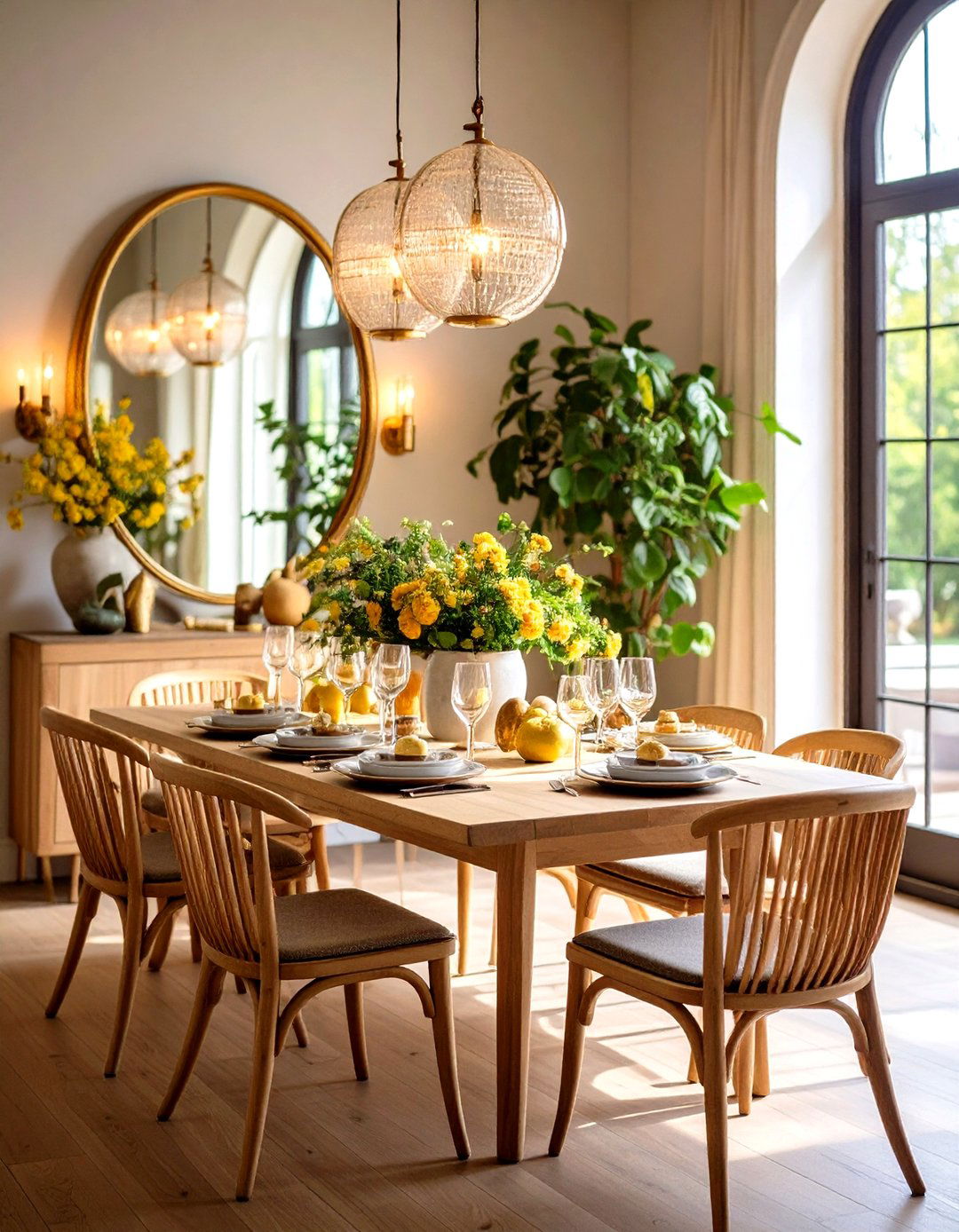
Incorporating mirrors into the lighting design amplifies light in compact dining rooms. Mirror-backed sconces or mirrored pendant canopies reflect and multiply brightness, making the space feel larger. Additionally, placing a decorative mirror opposite a light source doubles its impact. Some fixtures combine mirror elements—such as mirrored shades or reflective hardware—to optimize illumination. This strategy leverages reflective surfaces to bounce both natural and artificial light, brightening corners and visually expanding the room. Mirror-enhanced lighting adds glamour and works especially well in rooms with limited window access, ensuring even distribution of light across tables and walls.
10. Sputnik Chandeliers
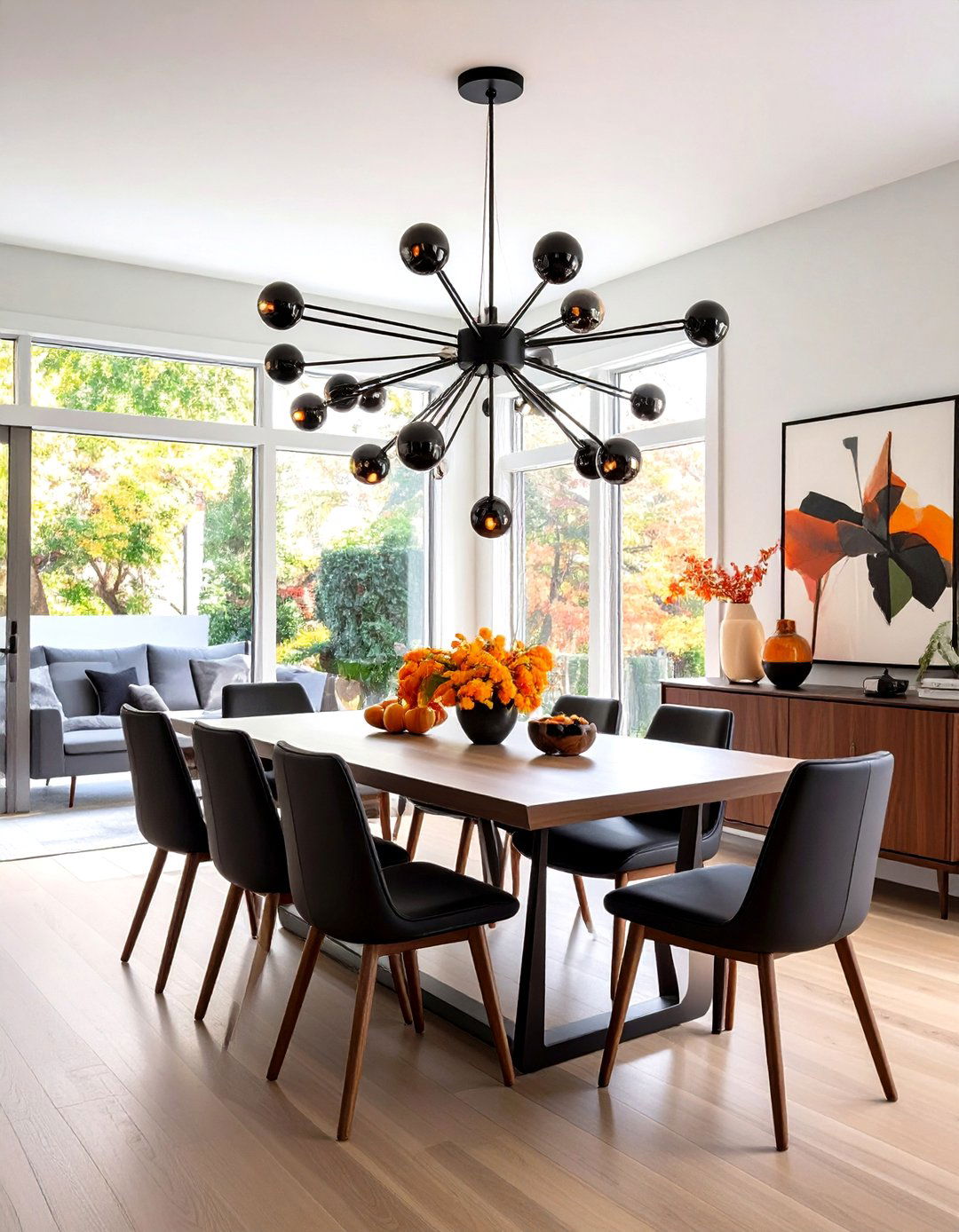
Sputnik chandeliers bring midcentury flair with their starburst design, featuring multiple arms radiating from a central sphere. Their open structure and spaced bulbs prevent a “heavy” look, ideal for rooms with limited ceiling height. Adjustable arms allow customized configurations to suit table dimensions. With brass, matte black, or chrome finishes, Sputnik fixtures serve as both lighting and sculptural art. They cast light in multiple directions, creating dynamic shadows on walls and ceilings. In a small dining room, a compact Sputnik—perhaps with six to eight bulbs—adds a statement without overpowering the space, blending retro style with contemporary sensibilities.
11. Rattan Pendant Lights

Rattan pendants introduce natural texture and warmth, softening modern interiors while maintaining an open feel. Their woven construction allows light to filter through organic patterns, casting comforting shadows. Lightweight and often available in various shapes—domes, cylinders, or teardrops—rattan fixtures are well-suited for small rooms, as they don’t appear bulky. Their neutral tones integrate seamlessly with Scandinavian, coastal, or bohemian styles. Pair a single large rattan pendant with minimalist décor to accentuate its craftsmanship, or cluster smaller versions for a more eclectic look. Rattan’s eco-friendly appeal enhances ambiance while promoting sustainable design.
12. Industrial-Style Pendants
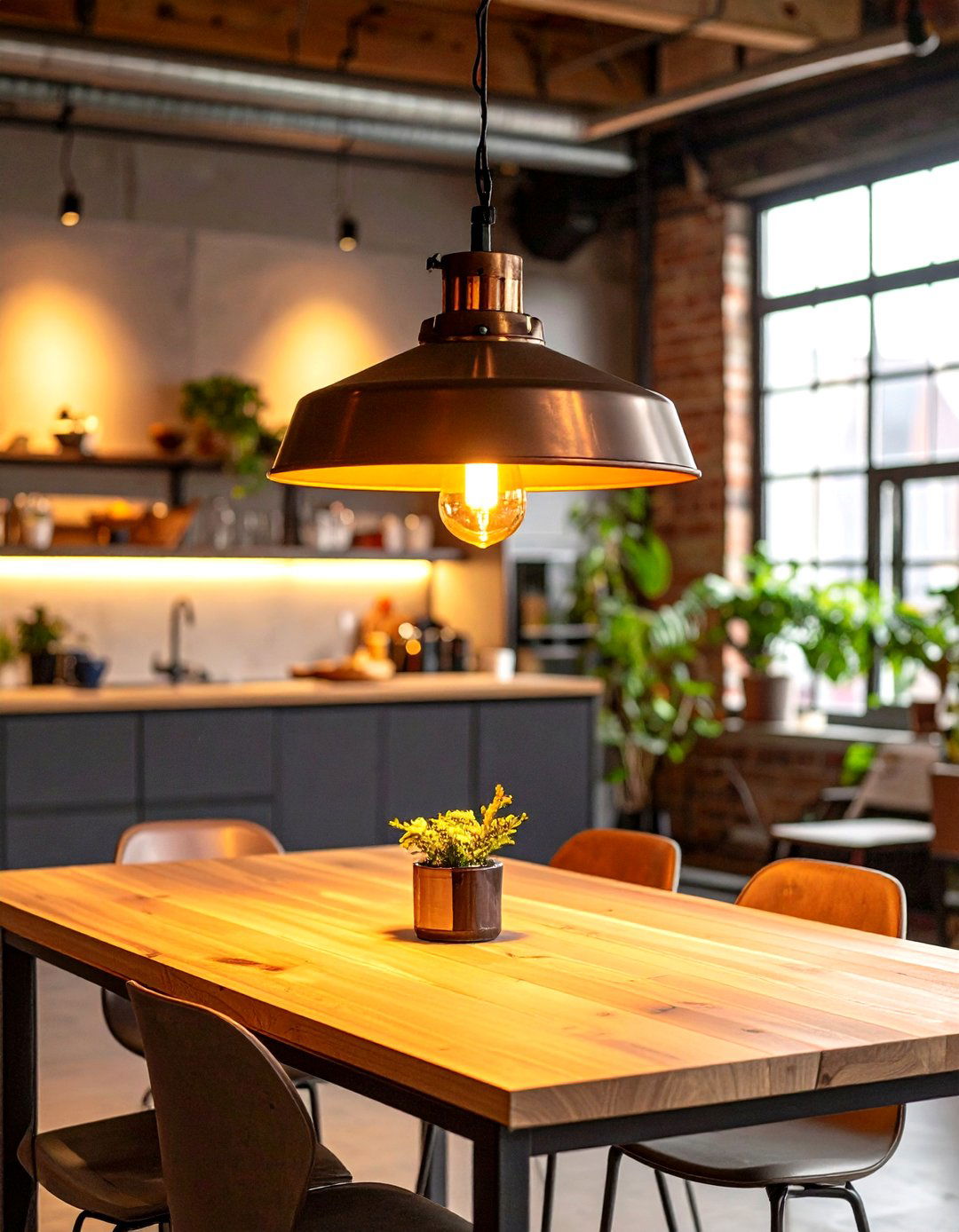
Industrial pendants—with their metal shades, exposed hardware, and matte finishes—lend an edgy, utilitarian vibe to a dining room. Compact designs, such as single-dome fixtures or mini warehouse lights, concentrate illumination directly onto the table. Grouped in pairs or triplets, they form a streamlined row above a rectangular table, optimizing task lighting while preserving an open ceiling plane. Black, gunmetal, or aged brass finishes anchor the space visually without adding bulk. Industrial pendants pair well with reclaimed wood tables or concrete accents, adding character and contrast to a small dining corner.
13. Paper Lantern Pendants
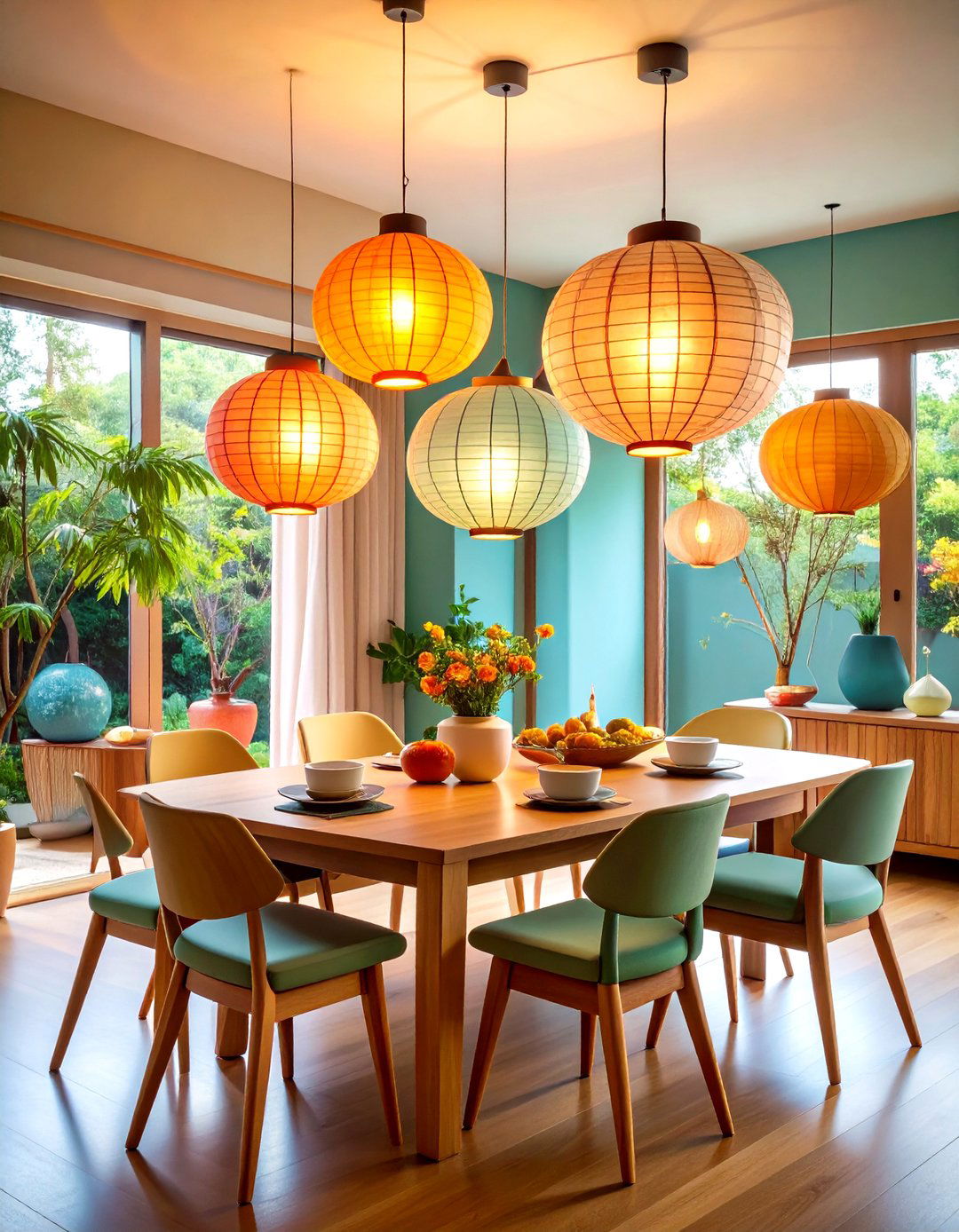
Paper lanterns deliver soft, diffused light that bathes a small dining room in a warm glow. Inspired by Noguchi’s Akari lamps, these fixtures use rice paper or translucent parchment to filter bulbs, creating a serene ambiance. Their lightweight construction and spherical or cylindrical silhouettes occupy minimal visual weight—perfect for compact spaces. Hang a single large lantern over a round table for a calming focal point, or cluster multiple sizes for an artistic display. Paper lanterns complement minimalist, Japandi, or modern boho interiors, adding an organic touch that soothes and uplifts.
14. Globe Cluster Pendants
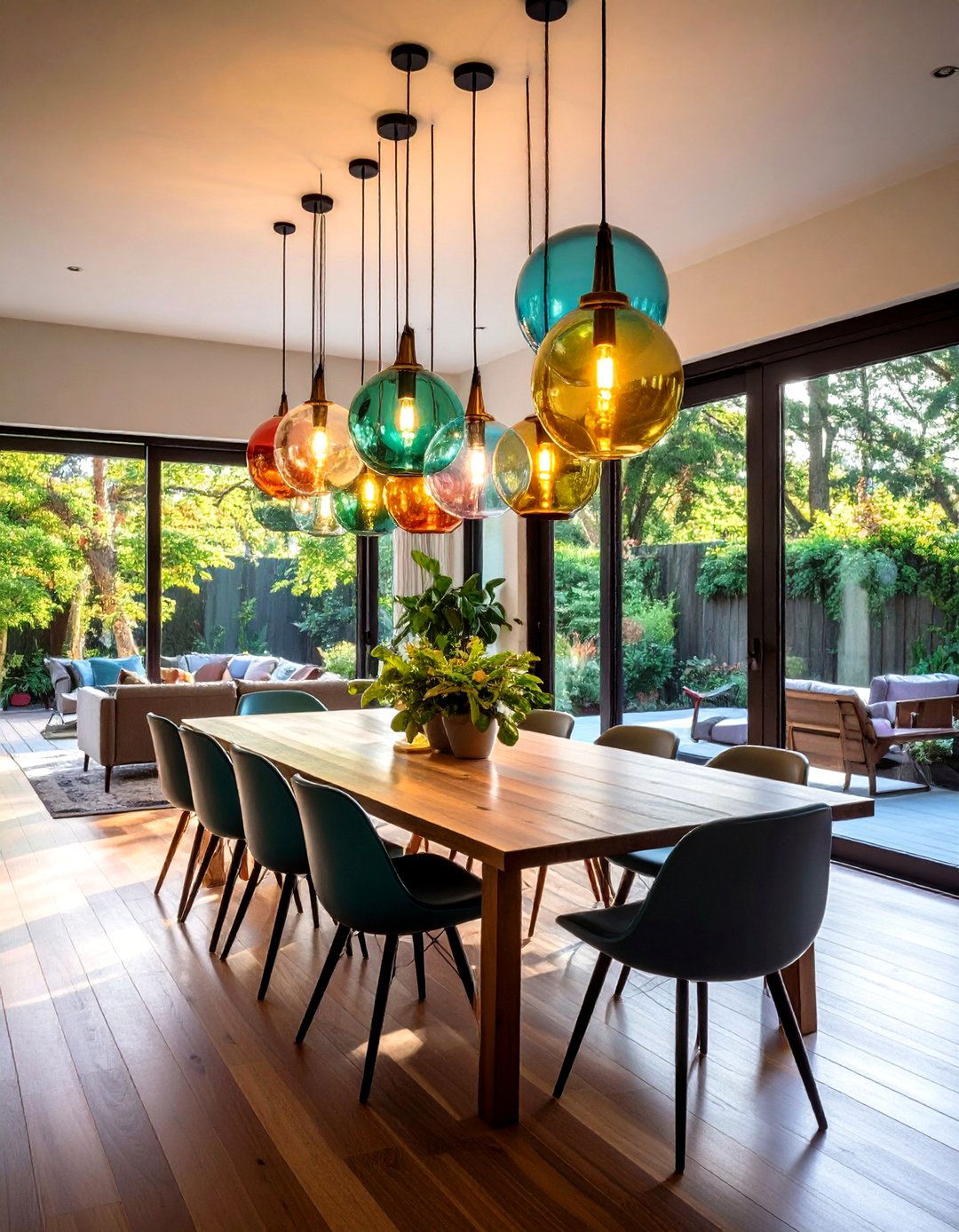
Globe cluster pendants feature multiple spherical glass shades arranged around a central fixture or linear bar. The globes’ reflective surfaces and gentle curves enhance light distribution, while their grouping creates sculptural appeal. In small dining rooms, a modest three- to five-globe configuration provides ample illumination without overwhelming the ceiling. Adjust the drop lengths to introduce depth and movement. Globe clusters suit midcentury, modern, or eclectic décor, pairing seamlessly with both metal and wood elements. Their balanced form ensures uniform lighting across narrow tables, making every seat feel equally illuminated.
15. Statement Sculptural Fixtures

Sculptural fixtures—such as branching chandeliers, abstract metal forms, or custom art lights—double as functional art pieces. In small dining rooms, a single sculptural fixture becomes the room’s centerpiece, eliminating the need for additional décor. Opt for open-frame designs or thin metal rods to maintain a sense of airiness. The fixture’s unique silhouette casts intriguing shadows and reflects light in unexpected ways. When positioned correctly, these art lights draw the eye upward, creating a perception of height. Their bold forms elevate a compact dining area into a gallery-like space, emphasizing creativity and personal style.
16. Cove Lighting
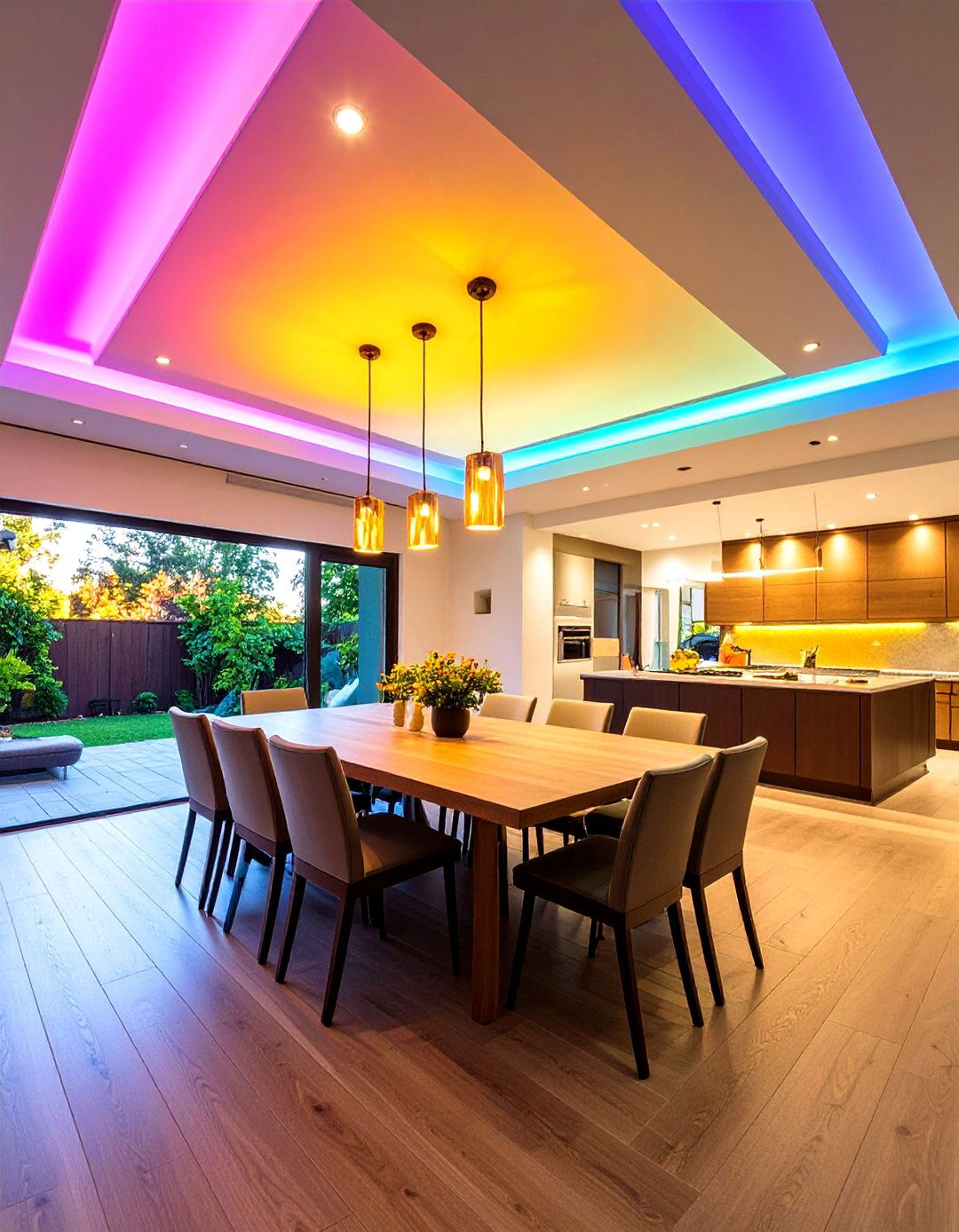
Cove lighting—LED strips installed in ceiling recesses or atop moldings—casts indirect, ambient light that softly washes the walls. This hidden illumination technique expands perceived ceiling height and eliminates glare. In small dining rooms, cove lighting can be the primary light source or accent existing fixtures, creating depth and warmth. Warm-white LEDs complement wood tones and neutral palettes, while color-changing options introduce playful mood lighting for special occasions. Because the fixtures remain concealed, cove lighting preserves a clean ceiling plane, making the room feel uncluttered and expansive.
17. Track Lighting
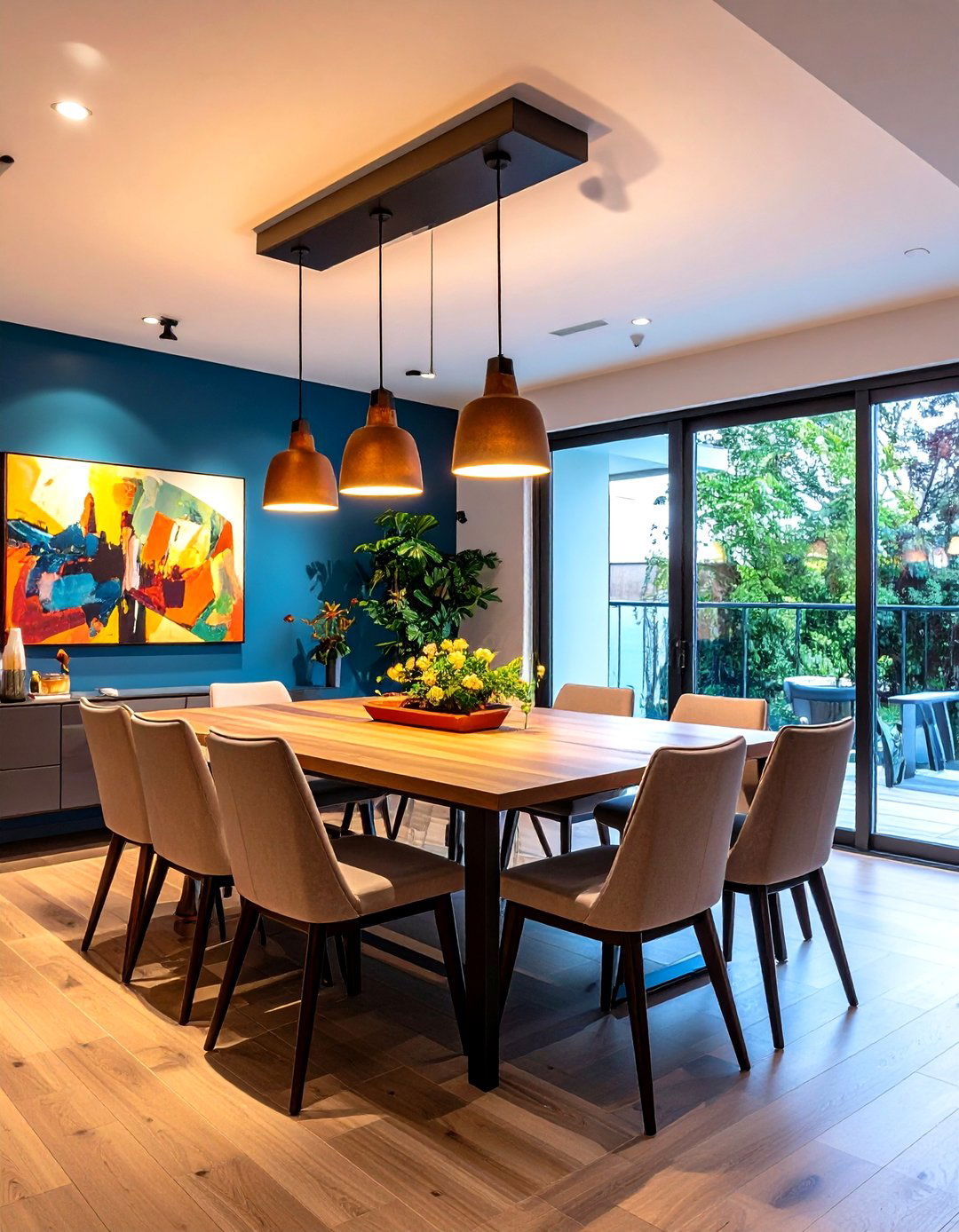
Track lighting offers flexibility with adjustable heads that can be aimed at the dining table, artwork, or architectural features. Low-profile tracks mounted close to the ceiling keep sightlines clear. In compact dining rooms, a single run of track above the table provides both general and accent lighting, with the freedom to reposition fixtures as needed. LED track heads minimize heat and energy use, while dimmable functionality allows seamless ambiance control. This solution is especially useful in multipurpose spaces, easily shifting focus from dining to workspace or gallery display.
18. Dimmer Switch Integration
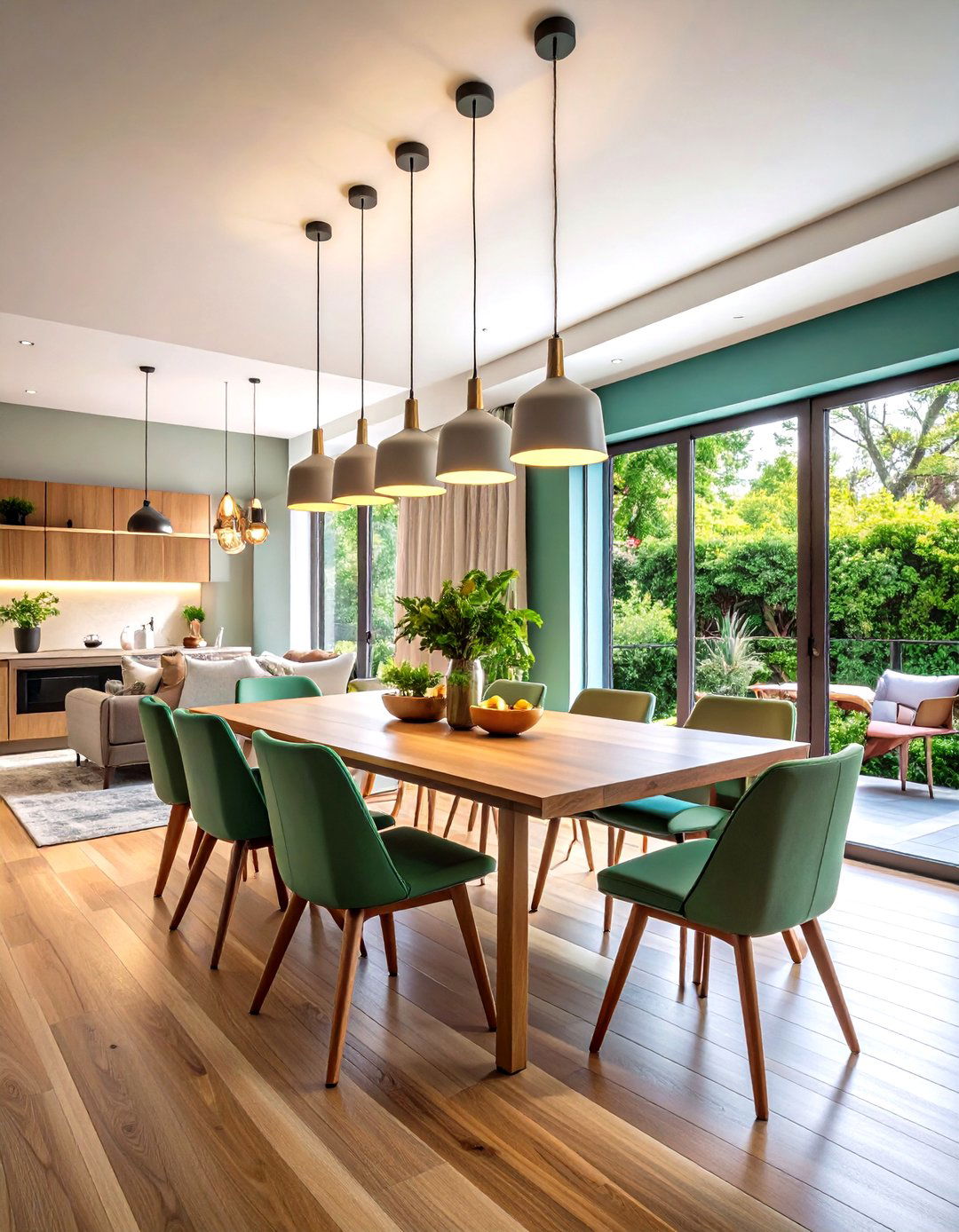
Incorporating dimmer switches is crucial for small dining rooms, enabling precise control over fixture brightness and mood. Whether used with chandeliers, pendants, or recessed lights, dimmers allow you to adapt lighting levels to various activities—from bright task lighting during meal prep to soft, romantic illumination during dinner. Modern dimmers support LED and CFL bulbs, ensuring compatibility with energy-efficient fixtures. When combined with multiple lighting layers, dimmer integration provides effortless transitions and maximizes both style and functionality in a compact space.
19. Skirting LED Strips
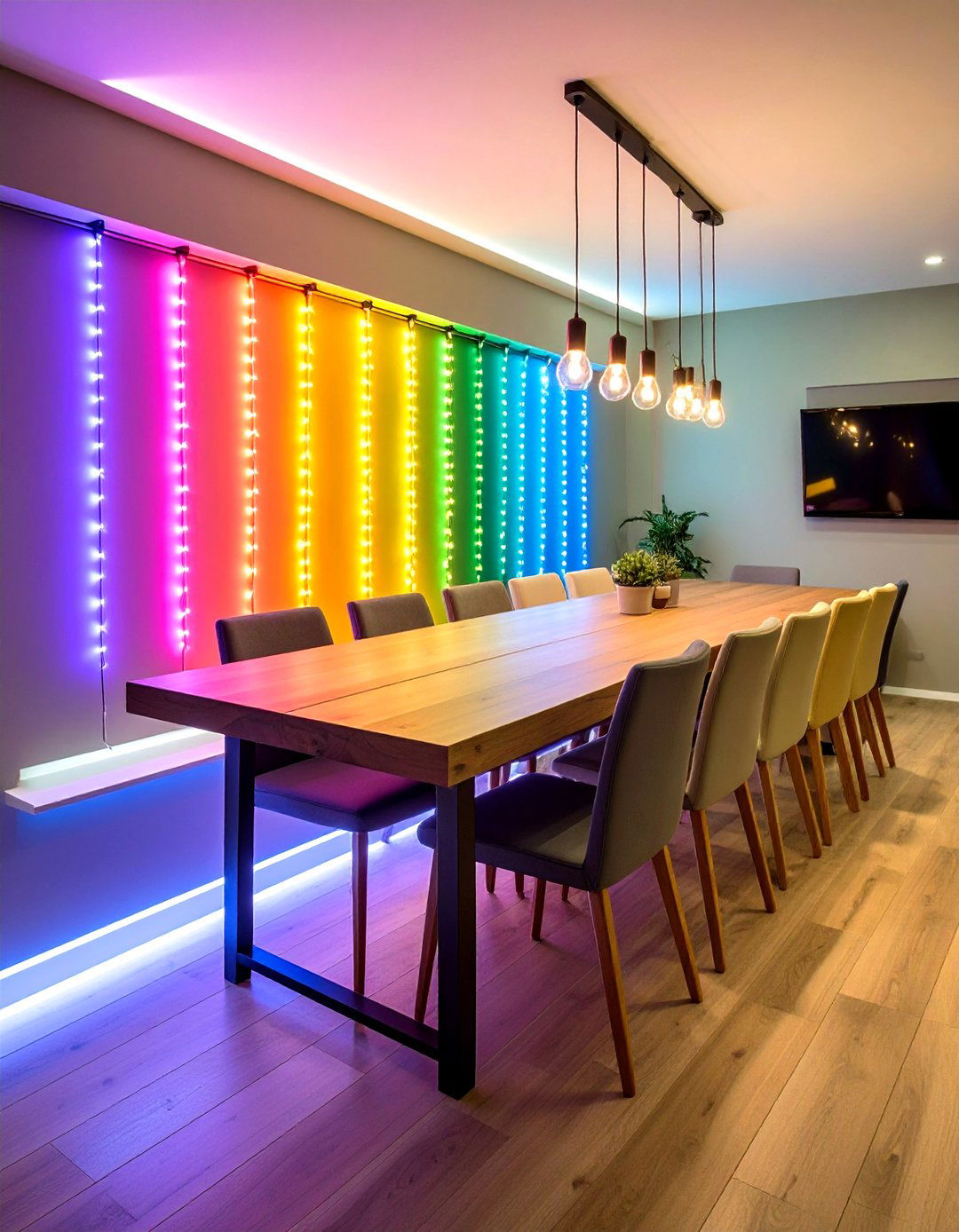
Installing LED strips along the baseboards or underside of a floating shelf creates a subtle glow that defines the room’s perimeter. This low-level lighting adds ambiance and guides the eye around the space, making the dining area feel larger. Skirting LEDs work well with banquette seating or wall-mounted consoles, highlighting architectural lines without adding visual clutter. Select warm-white or tunable white strips for a cozy atmosphere. Since the LEDs are hidden, they maintain a minimalist aesthetic while adding a modern, tech-savvy touch to a small dining room.
20. Reflective Surfaces to Amplify Light
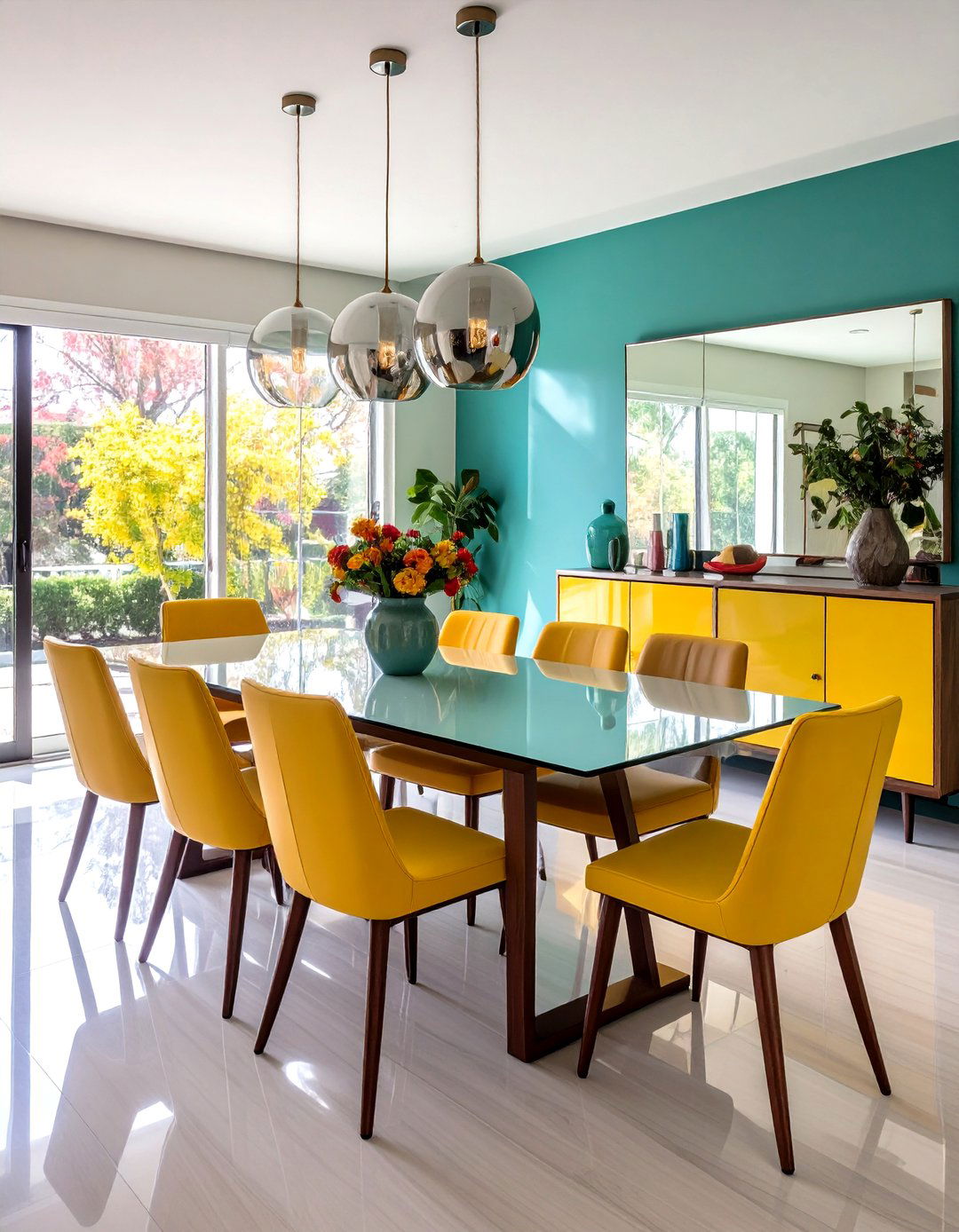
Beyond mirrored fixtures, incorporating reflective surfaces—such as glossy tabletops, metallic accent walls, or high-sheen finishes—multiplies light sources in a small dining room. Pair a pendant or chandelier with a lacquered cabinet or metal-backed buffet. Light bouncing off these surfaces brightens corners and visually expands the room. Even reflective dining chairs or bar stools contribute to light diffusion. This strategy leverages every lumen produced, ensuring your carefully selected fixtures have maximum impact while adding a touch of glamour to the compact space.
Conclusion:
By thoughtfully selecting and combining these 20 lighting ideas—ranging from unobtrusive flush mounts to bold sculptural fixtures—you can transform a small dining room into a bright, spacious, and stylish environment. Key strategies include layering ambient, task, and accent lighting; integrating dimmers for mood control; and using reflective materials to amplify light. Whether your aesthetic is midcentury modern, rustic farmhouse, or minimalist contemporary, there’s a lighting solution designed to enhance functionality and elevate the ambiance of even the coziest dining spaces.


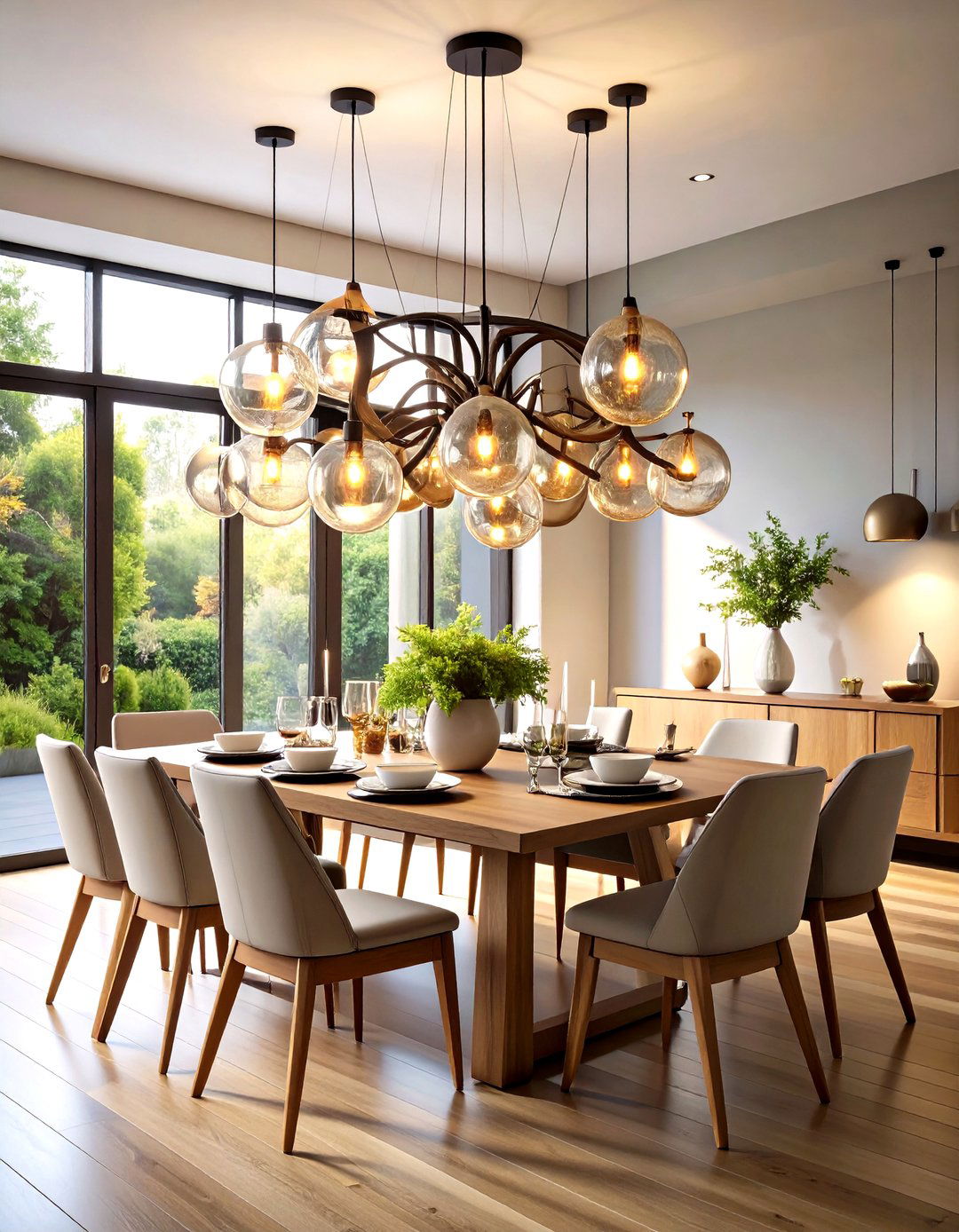
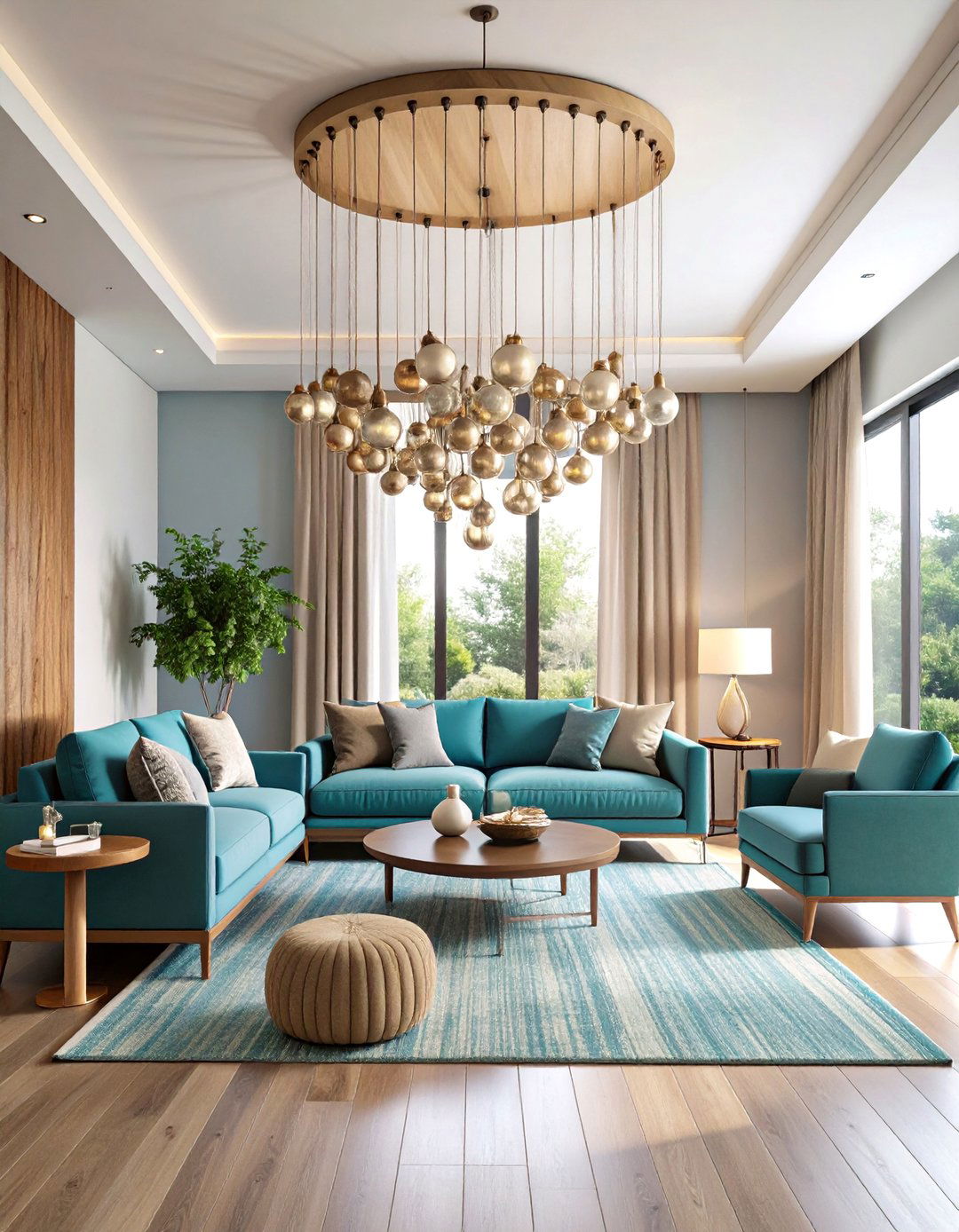
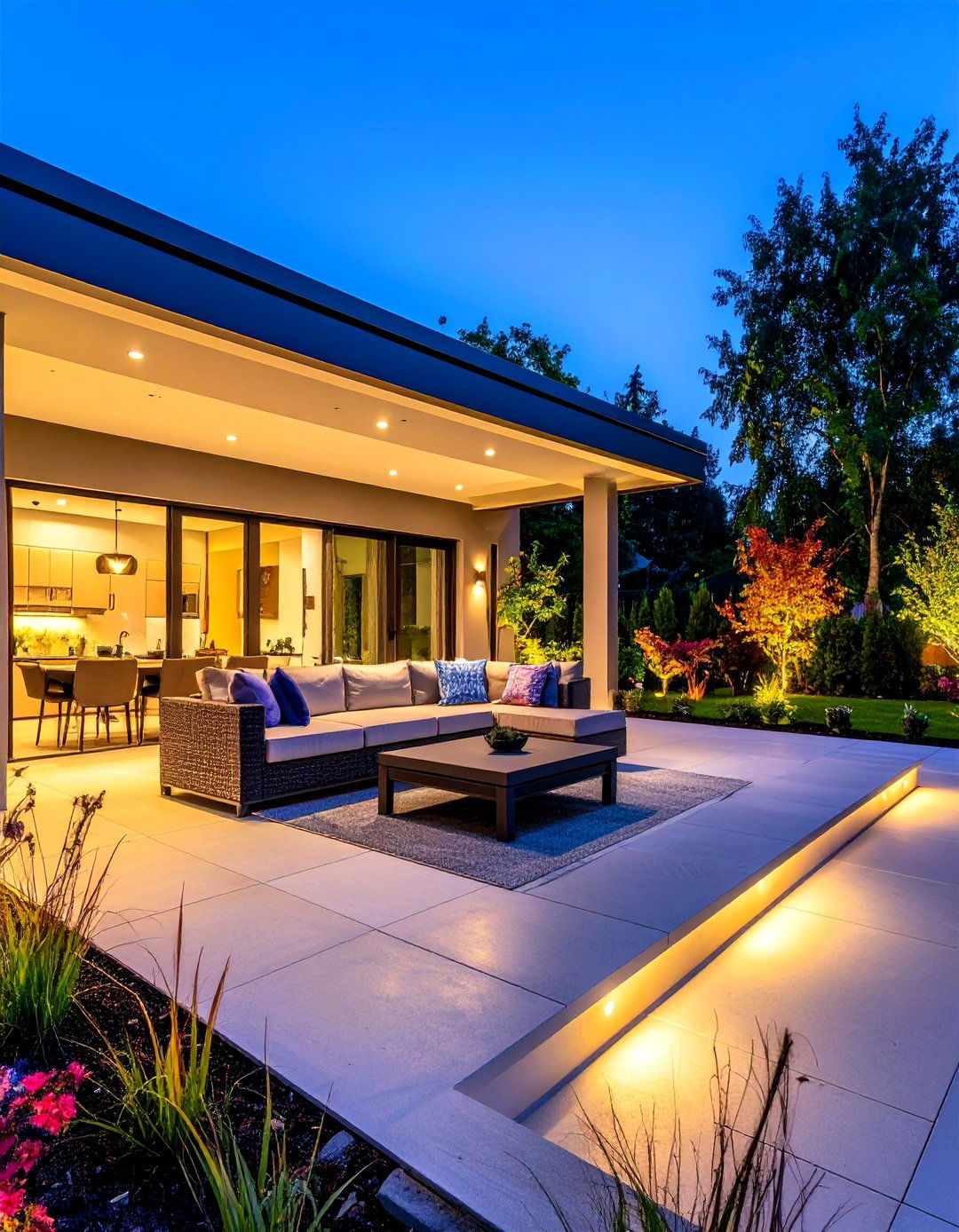
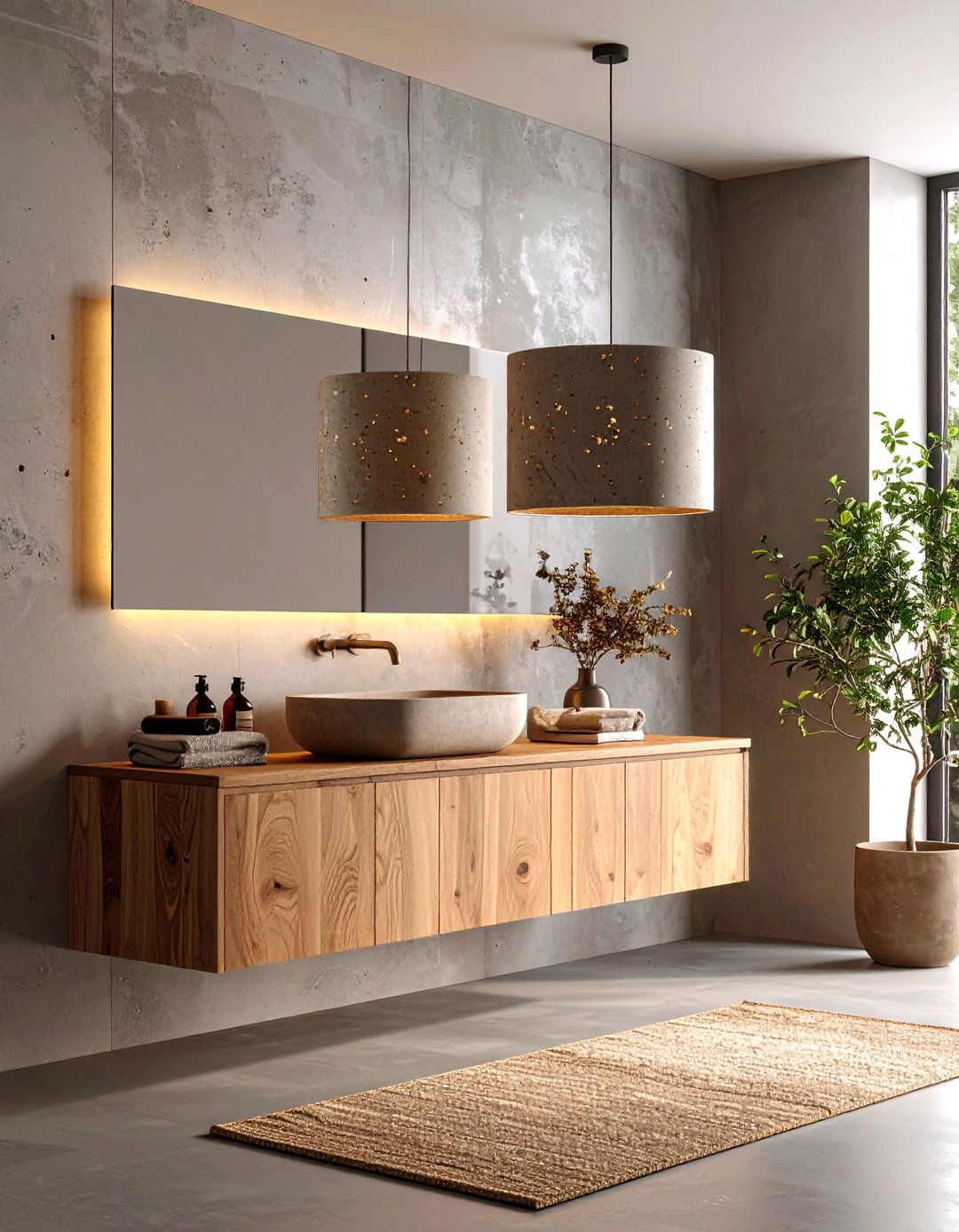
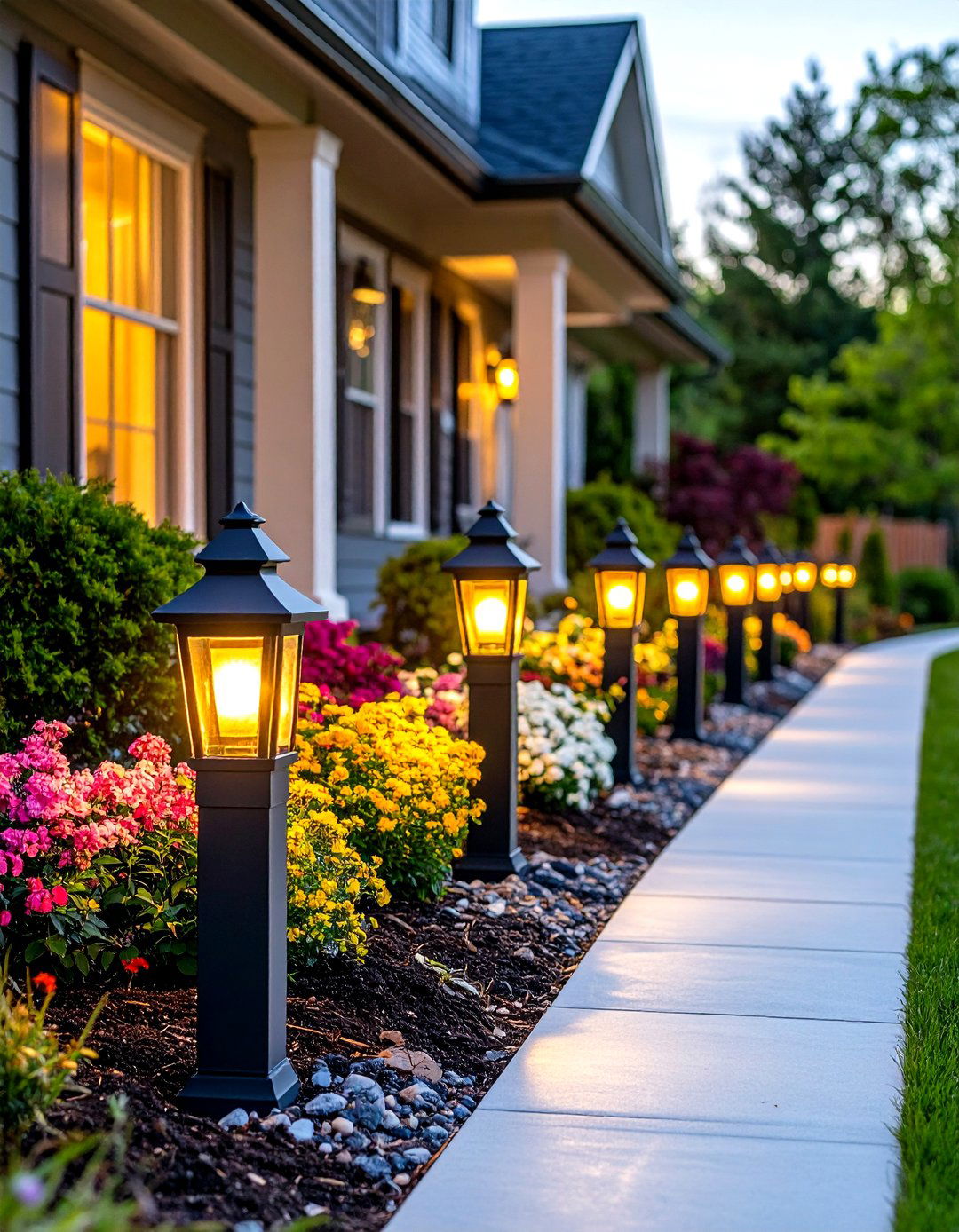


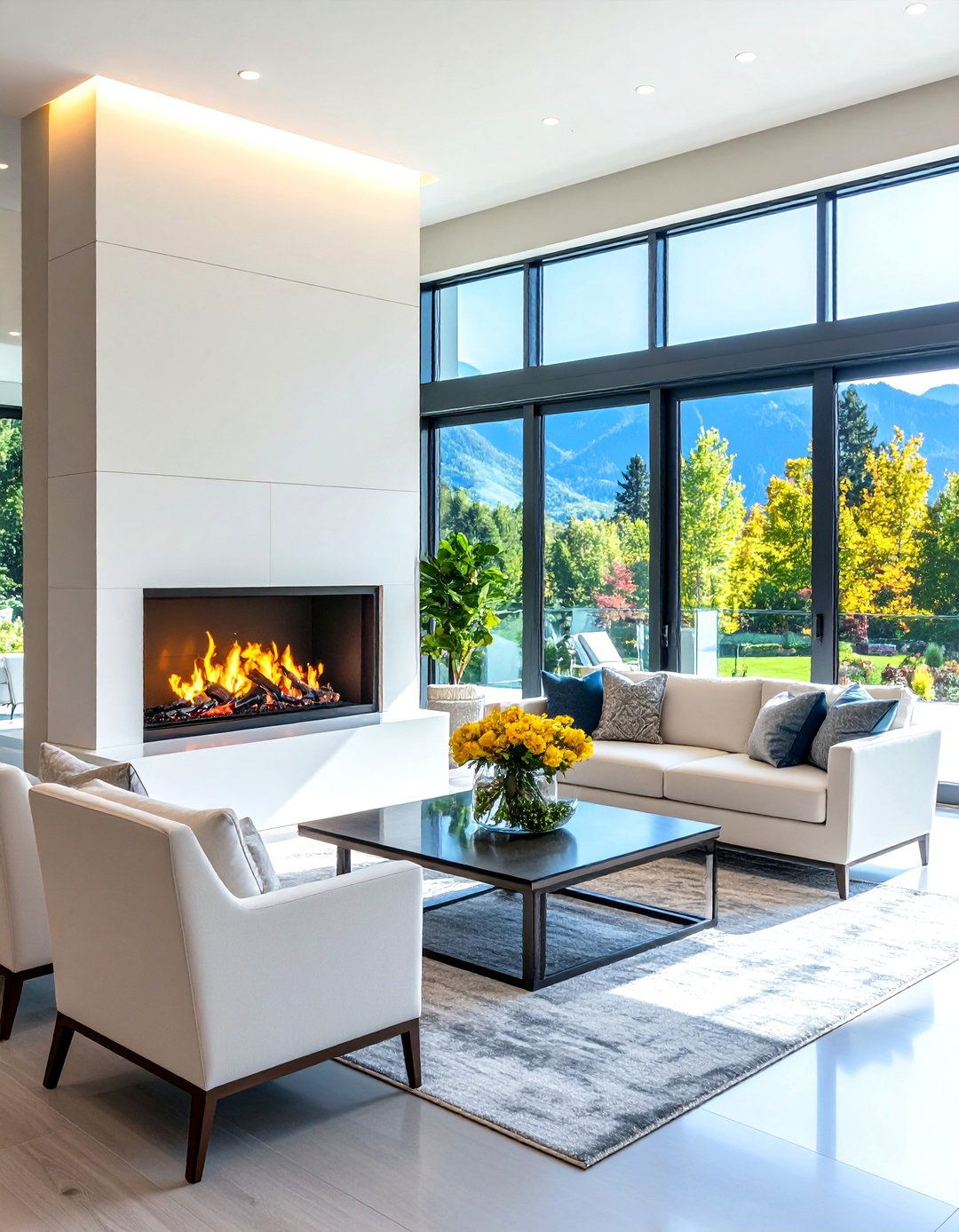
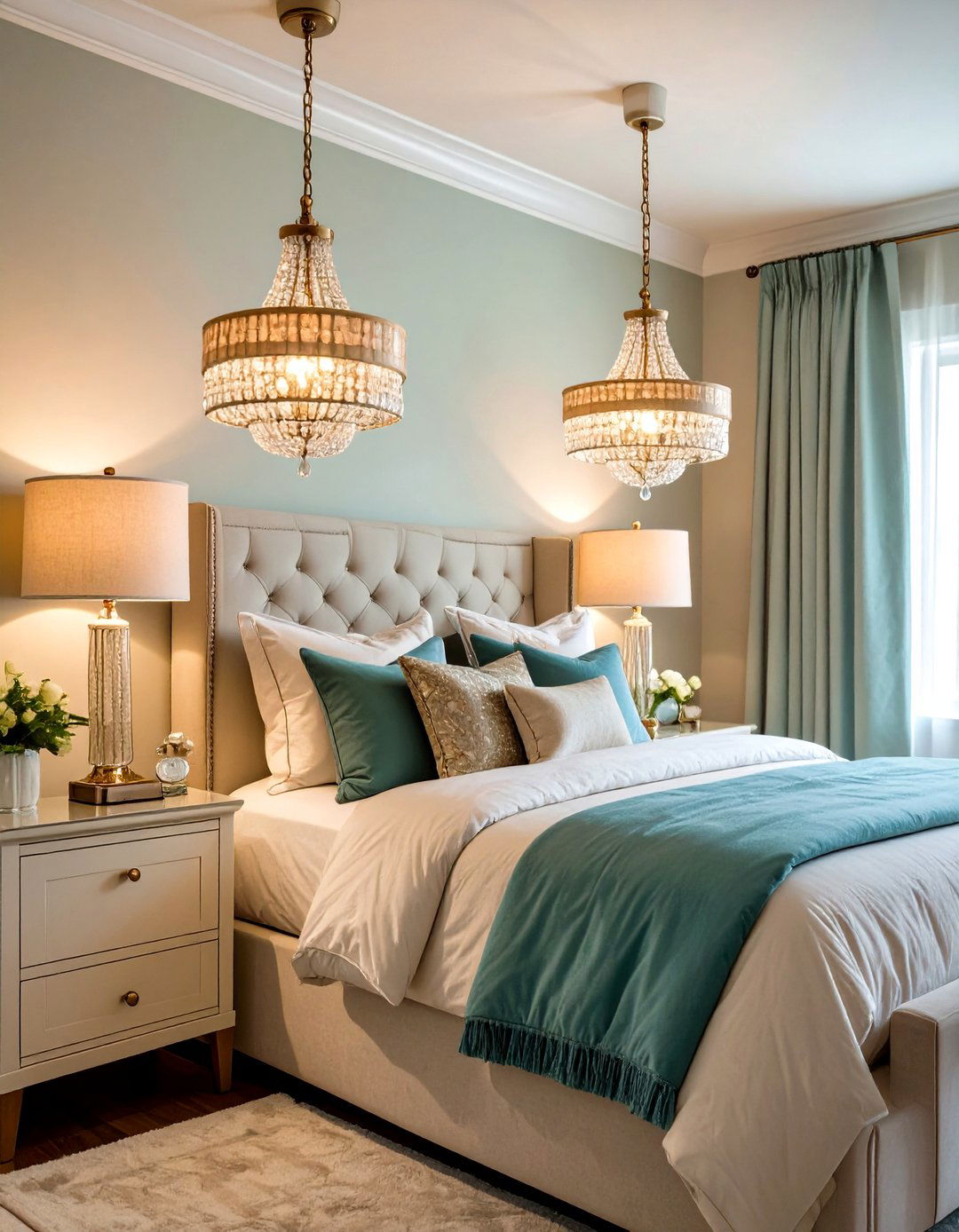
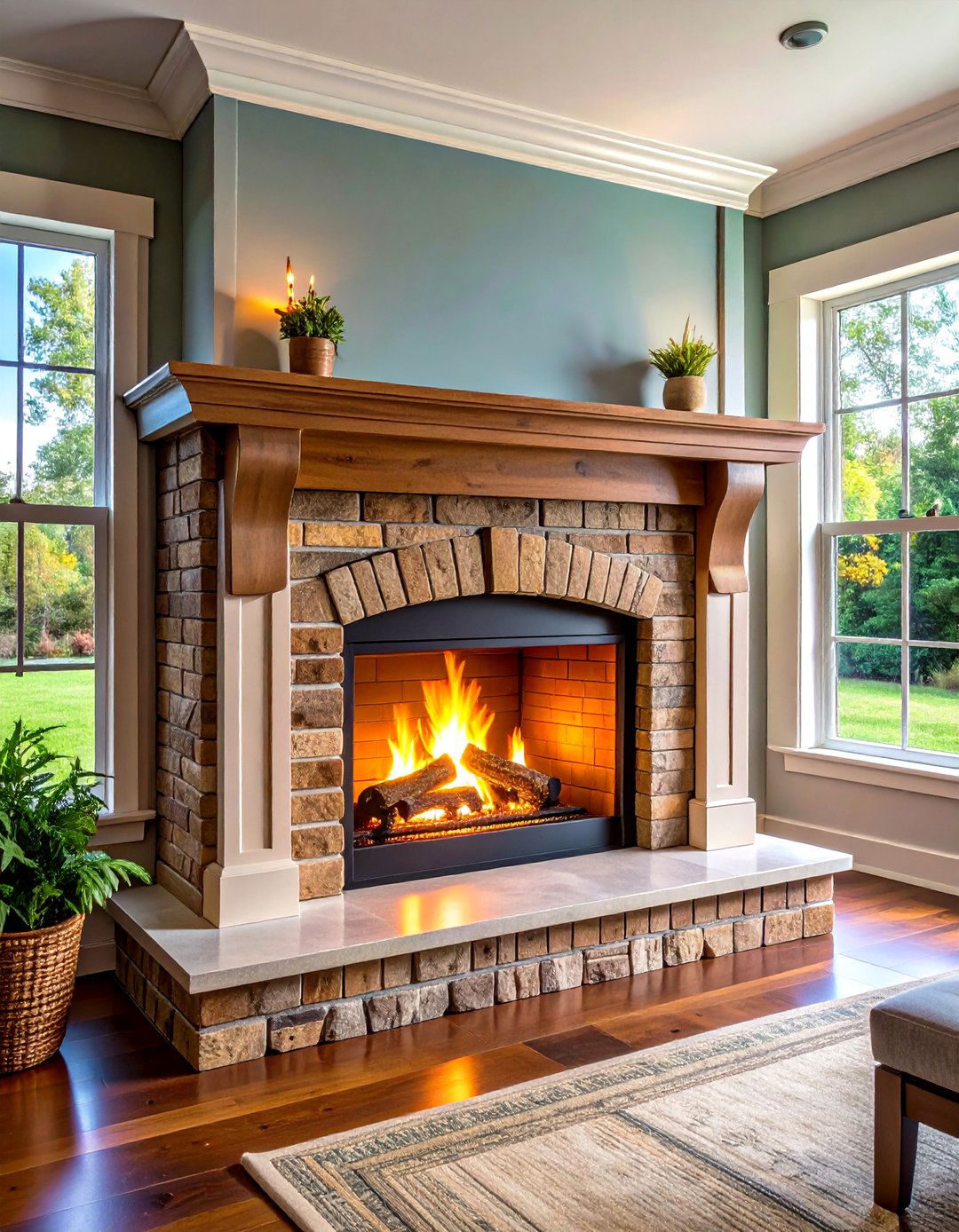
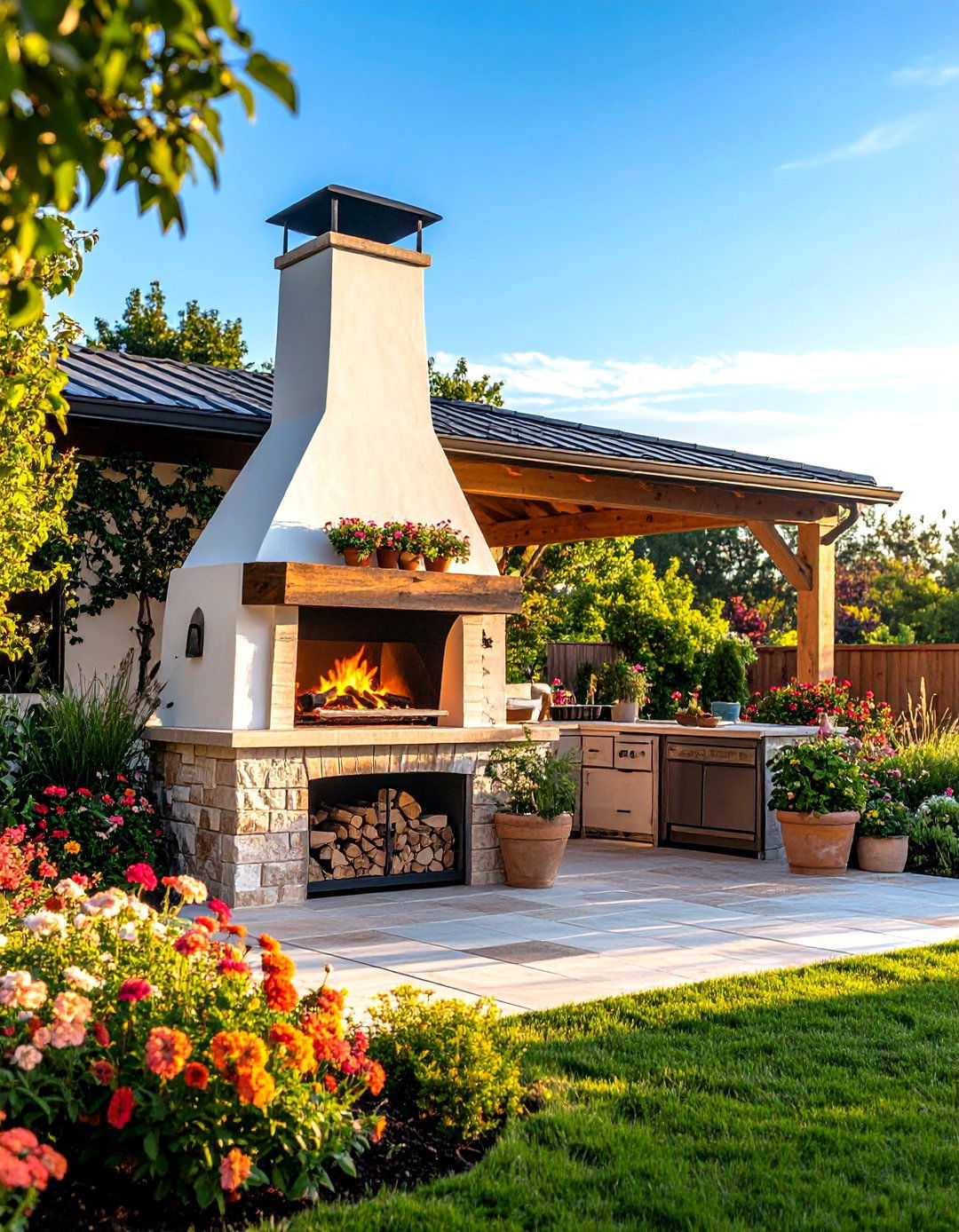

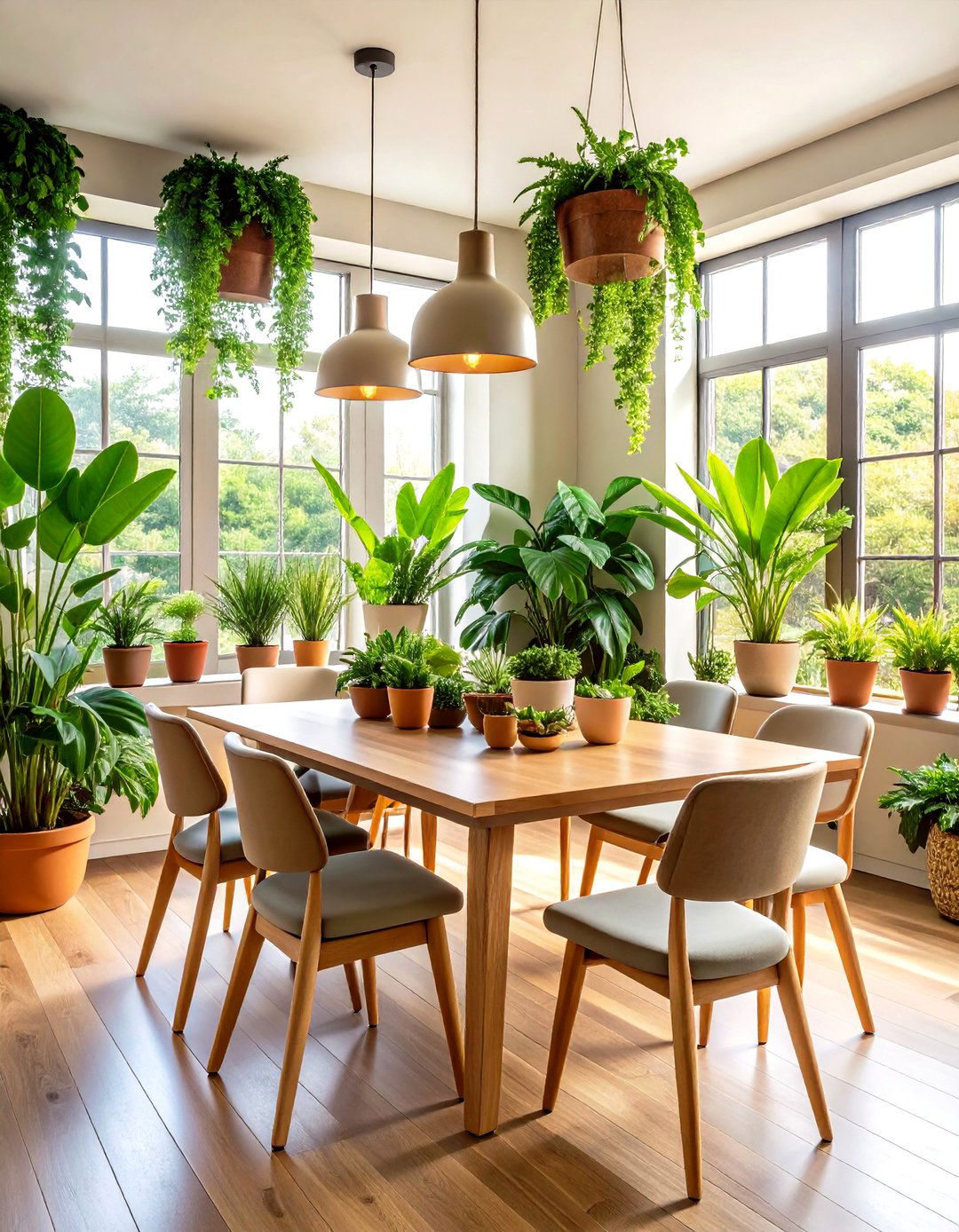
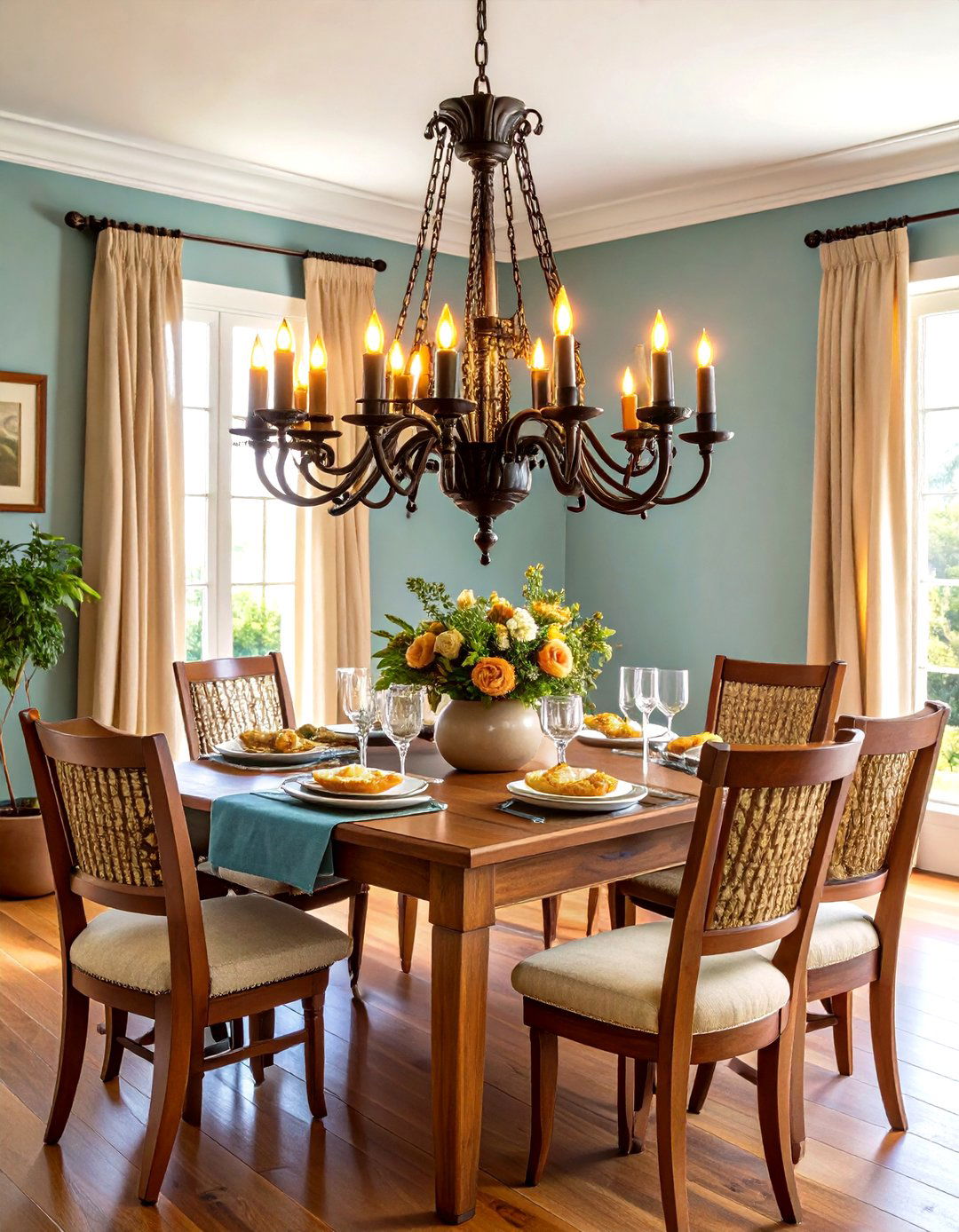
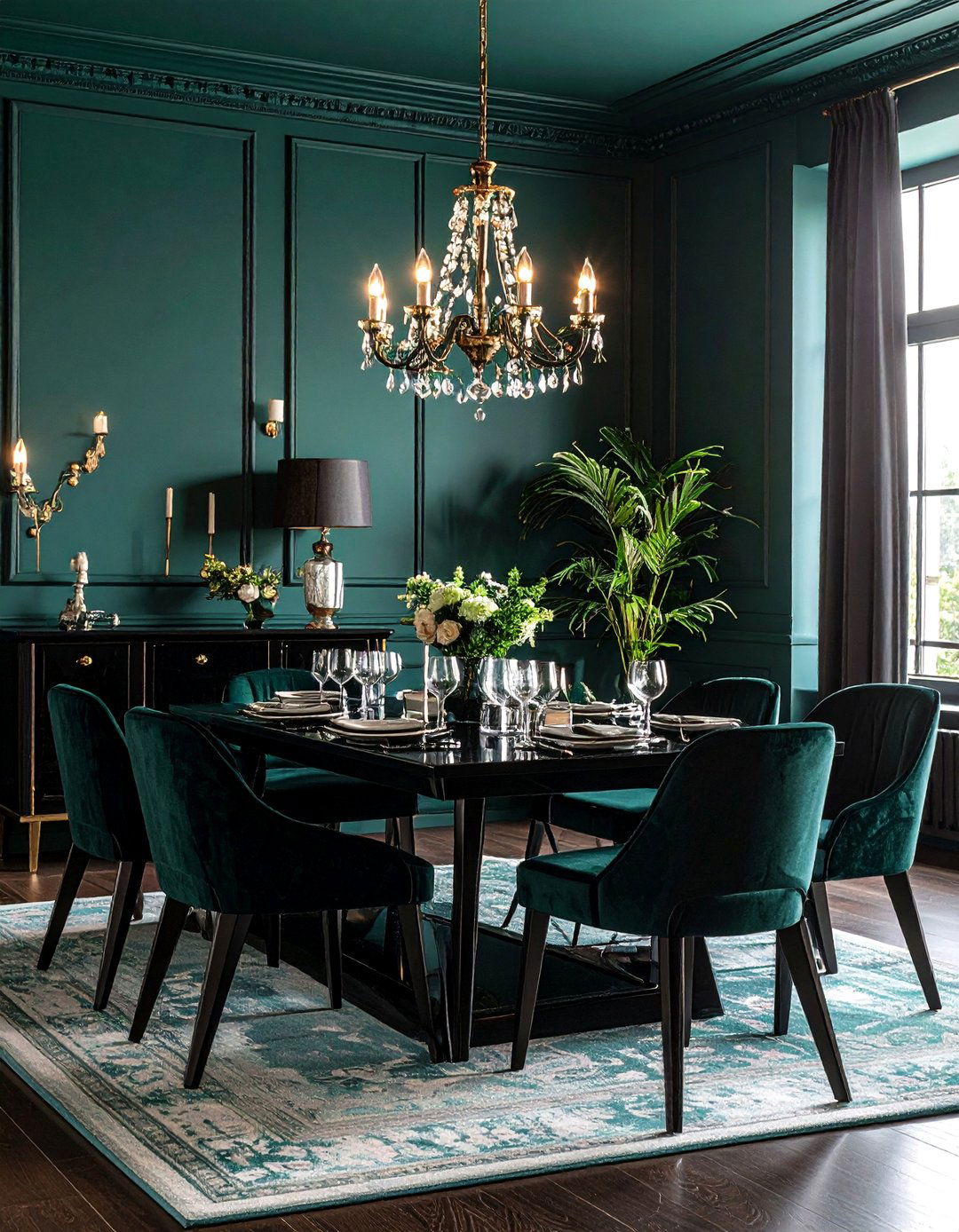
Leave a Reply